

EDITORIAL

Software-defined: Just another empty buzzword in the wake of the fourth industrial revolution? At COPA-DATA, we say no. We believe in flexible, software-based control as the model of the future. Find out why in this issue of Information Unlimited. It’s all about software-defined operational technology (OT), software-defined automation, and a solution that is revolutionizing distributed control systems in the life sciences: OpenDCS. You can find out more in the Spotlight and Products & Services sections of this issue.
Discover the milestones for our zenon software platform that enable IT-OT convergence and software-defined automation (page 8). The interview on page 12 reveals why the German pharmaceutical company Boehringer Ingelheim is charting this path. Its idea that software-defined OT must go hand in hand with a cultural change is very exciting. Or would you like to delve deeper into the technical details? Then I recommend ”DCS is ready for a revolution” on page 22.
What else can you expect from the forty-fourth issue of Information Unlimited? Our Product Manager Dominic Voithofer writes about the arrival of Linux in the world of automation (page 26). Matthias Schnöll, also from Product Management, discusses the new functions of zenon Device Management (page 29). And our sustainability specialist Emilian Axinia speaks with Kiva Allgood, Managing Director of the World Economic Forum (page 38). Plus, would you like to know what happens when a distributed control system wants to serve a drink (page 34)?
As you can see, this issue of Information Unlimited covers a wide range of topics. Many were discussed in Salzburg during zenonIZE 2025. Some 500 automation experts from all over the world traveled there to join us (page 52) at what was our largest customer and partner event to date. The event motto “Composing Tomorrow: Automate, Digitalize, zenonIZE” chimes perfectly the fourth industrial revolution.
I hope you find this issue inspiring.
THOMAS PUNZENBERGER CEO

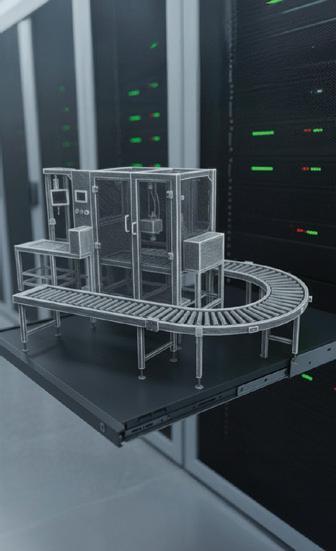
PRODUCTS & SERVICES
fourth revolution: When software takes control
Software-defined automation as the key to digital transformation
The new generation of distributed control systems
happens when your DCS is a disconnected control system? SPOTLIGHT
Clemens Connected:
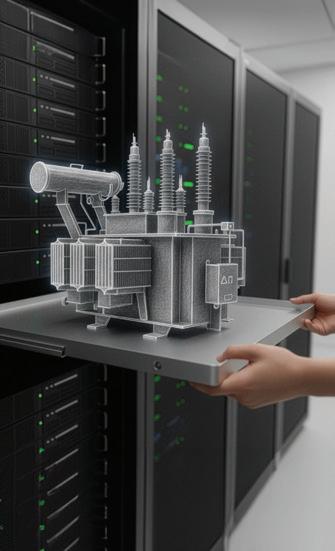




THE FOURTH REVOLUTION: WHEN SOFTWARE TAKES CONTROL
“Software-defined” means that software controls and manages hardware resources – without traditional hardware-based methods. This approach can provide companies with greater flexibility, automation, and often improved efficiency in a wide range of IT areas. Phillip Werr, Executive Board Member at COPA-DATA, discusses this automation architecture of the future.
The term “software-defined” comes from the world of IT, particularly software-defined networking, and it describes the use of software as a tool to manage resources flexibly and expand functionality – independently of the operational hardware component. In recent years, for example, the term “software-defined vehicle” has become mainstream. In this example, vehicle functions handled previously by specialized components are now mapped and developed further using software.
DEFINED BY SOFTWARE
However, the concept of “software-defined” also has strong roots in automation. The programmable logic controller (PLC), considered the cornerstone of the third industrial revolution, is based on the same principle. Instead of hard-wired logic devices in the equipment hardware, software instead takes over the role of defining and running the control logic.
THE 4TH REVOLUTION HAS ARRIVED
Speaking of industrial revolution, there has been less buzz lately about the fourth industrial revolution (4IR). An analysis of global internet traffic for the term shows a drop-off in recent years. This may be because the fourth revolution was announced in advance, in contrast to the three other industrial revolutions. Nevertheless, it remains a salient topic. What started out as an eye-catching buzzword has by no means fizzled out. Rather, we have moved into the implementation phase.
PLC VS. SDA
One important 4IR topic is software-defined automation (SDA). Progressing beyond programmable logic controllers (PLCs), the focus today is on decoupling control logic from hardware, with the goal of making the logic – the heart of automation – flexible and software-based. This is a good example of the oft-cited convergence of information technology (IT) and operational technology (OT), where principles and
approaches from IT find their way into automation. Essentially, the logic code migrates from the controller to a virtualized environment. What factors are driving this new development? The demand for lower (hardware) costs, faster and more flexible implementation, and better security while also making the solution easy to scale.
ENTHUSIASM FOR AUTOMATION
The ladder diagram was originally developed to make industrial processes programmable. The idea was to ensure acceptance among engineers, who were accustomed to circuit diagrams. Today, the push for acceptance is moving in a different direction: Professionals with IT and coding backgrounds are encouraged to become enthusiastic about industrial automation. Systems such as COPA-DATA’s zenon enable users to program industrial control logic using the latest languages, such as Python. This is another example of the practical convergence of IT and OT.
SDA FOR ALL AUTOMATION SERVICES
In the philosophy of the zenon software platform, “software-defined” refers not only to the logic programs but to all elements of the software platform. Containerized automation components such as PLCs, visualization/ human-machine interfaces (HMI), or recipe management – to name only a few examples – can be arranged flexibly and independently of the underlying hardware. This has several benefits. On the one hand, it reduces acquisition and operating costs. On the other hand, IT methods, such as security, DevOps, and scalability, can be applied to automation.
OPEN AND MODULAR AUTOMATION
In general, the need for flexibility and speed when designing and commissioning new systems grows as firms strive to ensure fast time-to-market in a cost-effective manner. The answer to this situation is modular automation, where existing components are orchestrated on a flexible basis. Here, too, the benefits of software-de-
fined automation come into play, as modifications to the end-to-end system, which previously required hardware adaptation, can now be implemented entirely by software.
DEPLOYMENT WITH ZENON
A number of technology milestones for the zenon software platform enable both IT-OT convergence and software-defined automation. They include:
– Runtime on Windows and Linux with identical engineering
– Native support of containerization and virtualization
– Virtualization of control levels
– Logic programming with Python
– Support of standardized interfaces to hardware (e.g. OPC UA) and integration of brownfield components with native communication
– Central orchestration and administration of individual services
– Interoperability and openness
WHY DO WE RELY ON SOFTWARE-DEFINED AUTOMATION?
In line with our company’s motto, “There must be an easier way”, we support our users as a reliable technology partner. Our software is designed to simplify complex tasks. However, our customers’ challenges are constantly evolving. Production and energy systems have to become increasingly agile and flexible, and commissioning is becoming more complex – as are maintenance and expansion during ongoing operations.
In the manufacturing industry, there are several factors behind this development. These include, for example, shorter innovation and product lifecycles, variability in raw material procurement, a shortage of skilled workers, and increasing demands for sus-
tainable production. In the energy sector, the energy transition – both in generation and in the continued development of energy grids – is technologically, organizationally, and commercially challenging. And with today’s expectations of interconnectedness, all sectors must prioritize and ensure the highest levels of cybersecurity.
We understand that our users rely on the advantages provided by IT methods to maintain control in this challenging environment. Not only do we seek to empower our customers to respond as needed, we also aim to equip them with the tools to implement their respective corporate strategies proactively and be ready for the future. Against this backdrop, we consider it our duty to make the benefits of software-defined automation (and IT-OT convergence in general) available to our users with zenon.
USE-CASE OPENDCS
Software-defined automation is a key component of OpenDCS. It refers to a new generation of open distributed control systems (DCS) in the life sciences sector – an innovation developed by COPA-DATA. While in traditional DCS the hardware is a firmly integrated component used to enable distributed control, OpenDCS frees you from such restrictions. Now you can use software alone to flexibly define the combination of distributed control in an integrated control system.
GLOSSAR
Software-defined automation relies on functionality and logic via software – independently of the hardware.
Distributed control system (DCS) is a distributed, networked system for automated process control.
OpenDCS is COPA-DATA’s new generation of open distributed control systems (DCS) for the life sciences sector.

PHILLIP WERR Member of the Executive Board
As a member of the Executive Board, Phillip Werr directs the strategy of the Austrian software manufacturer COPA-DATA. He is committed to ensuring that the company’s vision goes hand in hand with the deployment of its solutions.
phillip.werr@copadata.com




SOFTWARE-DEFINED AUTOMATION AS KEY TO DIGITAL TRANSFORMATION
Why is the German pharmaceutical company Boehringer Ingelheim betting on software-defined automation? Frank Maurer, Global Head of Automation Strategy & Technology at Boehringer Ingelheim, explains his company’s approach in an interview with Bernhard Ebert, Vice President of Global Key Account Management at COPA-DATA. Alongside the future-ready, end-to-end solution, Maurer also recognizes the importance of changing the culture in a business.
Bernhard Ebert: Mr. Maurer, how did softwaredefined automation, or SDA, become a hot topic at Boehringer Ingelheim?
Frank Maurer: We launched an innovation project three or four years ago to explore the concept of a modular and mobile automation architecture. One of the key questions was: how would the underlying infrastructure have to look in order to roll out such solutions quickly and on a scalable, cost-efficient basis worldwide? It rapidly became clear that we needed an approach long embraced by IT; in other words, IT-like automation. This led us to pursue software-defined and cloud-native automation.
What happened next?
We realized that we needed an integrated tool chain in terms of Industrial DevOps. It’s about creating a global, end-to-end solution for the underlying OT-IT infrastructure that supports both traditional and modular automated processing facilities. Where it makes sense, we add mobile robotics and building automation. This allows us to offer our business partners at Boehringer Ingelheim a complete solution with three major benefits: easy to deploy, easy to scale, and easy to maintain.
Software-defined Automation
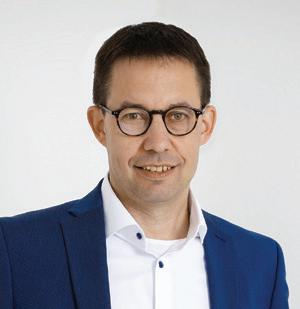
FRANK MAURER
Frank has been Global Head of Automation Strategy & Technology at Boehringer Ingelheim since 2023. He has been shaping the automation of the German pharmaceutical company for 20 years. With revenue of EUR 26.8 billion (2024) and 54,500 employees, the family-owned company, founded in 1885, is one of the world‘s largest players in the industry.
are reduced. Another key difference is openness: SDA supports both open interfaces and open-source approaches. When there were supply chain problems, we saw first-hand how much additional effort was required to quickly deploy different hardware in a proprietary, closed system.
Hardware independence is therefore essential?
That’s right, it is an absolute prerequisite for SDA. It allows users to make hosting decisions based on the application, regardless of the hardware. This flexible deployment strategy allows users to implement industrial automation solutions in a dynamic and scalable manner suited to the use case – for example, off-premises in the cloud, on-premises in an IT data center or on an IPC as a compute stack in a control cabinet directly at the facility. zenon is already very advanced in the containerization required by this type of solution.
How important is it to change the culture in a business in order to implement SDA successfully?
“Benefits” is a good buzzword. What functional benefits do modular automation approaches provide?
These days, there is a strong focus in industry on speed and cost-efficient solutions. This is where “plug and play” or “plug and produce” comes into play. In short, quick and easy engineering will be increasingly important in the future. Our goal is not to be a technology pioneer but to find an approach that provides a solution for our sites: forward-looking, easy to access, and optimized for costs. The benefits are indisputable.
This also follows social trends such as demographic developments. For example, skilled workers are decidedly harder to find today than they used to be. Even in large companies, there are often only a few people who understand specialized topics. So, remote services offer a huge advantage. Modern approaches such as SDA provide businesses with the opportunity to support sites without having to be physically present.
In your opinion, what are the key differences between classic automation systems and SDAbased approaches?
In addition to the speed I already mentioned, the topic of compliance is important in cybersecurity. In legacy situations, for example, compliance is often not 100% guaranteed and achieving it requires a lot of extra work. SDA is different because this approach allows for use of flexible, scalable, and, thus, cost-efficient standard tools that are familiar from the IT world.
And then there’s the critical issue of costs: in short, less Capex and less Opex. With the SDA approach, I have fewer capital expenditures and my operating costs
I think this is the most important point of all. Technology is one element – and it can provide solutions. However, a far greater challenge is to change the culture of a business. In my opinion, SDA is less a technology project than a change project, although this may look a little different for every company.
In my opinion, SDA is less a technology project than a change project.
Basically, it’s about emphasizing the massive benefits of software-defined automation. Many see risks and have fears, some of which are justified. But success stories can demonstrate why it is the right path. The transformation definitely takes time – typically years, not just months. However, this shouldn’t stop anyone. It’s best to start with simple automation tasks, for example, in less critical areas rather than with a large-scale project. The experience gained thus can help an organization to mature from both a technology perspective, for example in terms of stability and robustness, and as an organization. After that, users can take on more critical tasks.
Trends also influence corporate culture. What role do they play in relation to SDA?
In this context, IT trends are clearly influencing SDA. Trends and technologies that have led to disruptive improvements in the IT environment typically reach us with a delay and in an adapted form. This starts, for
example, with containerization, then continues with Industrial DevOps. For us, as a relatively small OT domain, this is a fundamental prerequisite for being able to benefit from disruptive trends such as agentic AI. It is so much easier to implement using SDA than with legacy structures.
I now actually believe that agentic AI-based automation engineering is not feasible without SDA. And with agentic AI, we have gained another useful tool in terms of speed and cost – on a scale that was unimaginable until recently. We are, therefore, all the more pleased that zenon Logic in zenon Version 15 is now also available with Python, in addition to the conventional IEC 61131-3 languages. This will enable us to implement agentic AI-based use cases, with the help of SDA, in the OT domain much faster and more efficiently in the future.
You already mentioned cybersecurity. What is its role in future automation systems in the SDA context?
Without professionally implemented cybersecurity, there will be no more equipment operations. This is already true today, but it will become even more so in the future due to the constantly growing potential for threats. The Network and Information Security 2 Directive (NIS 2) and the Cyber Resilience Act (CRA) will also leave us with no alternative from a regulatory perspective. However, the legislation only stipulates what should already be happening in the company’s own interest. The potential for threats is already there and given today’s geopolitical climate, it is not shrinking but rather growing.
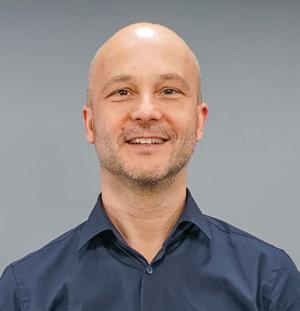
BERNHARD EBERT
Bernhard is Vice President of Global Key Account Management at COPA-DATA. He has been the contact for the Austrian software manufacturer‘s major customers for 16 years – the collaboration with Boehringer Ingelheim began in 2023. The pharmaceutical company is one of the first major customers to use the COPA-DATA OpenDCS approach.
SDA and solutions provided by IT are helping us meet these challenges. The argument often used in the past that “nothing can go wrong because we have an isolated solution” no longer holds true in most cases. We have interfaces everywhere, we want to access systems remotely for cost reasons, and we want data from our systems. The access points and, thus, the attack vectors have long been a reality.
Changing topics, how important are modularization, interoperability, and system openness?
This question is close to my heart. We have talked a lot about SDA but we still cannot forget to do our homework. This includes standardized interfaces, primarily Module Type Package (MTP) and OPC UA, but also the Asset Administration Shell (AAS). Without well-designed equipment interfaces, we would not be able to benefit from software-defined automation. The good news, however, is that SDA significantly enhances the major benefits of modular equipment engineering supported by MTP on the automation side.
In addition, open source will play a much larger role in the future – or at least its integration into open source ecosystems. In this context, we also have to make sure, of course, that there are still interesting business models for everyone involved. Open source is changing a lot – which entails risks and, undoubtedly, also many opportunities. There are already great examples from the IT environment – not only of significant added value for end customers but also of successful provider business models. I believe that we, as the OT community, should significantly intensify our collaboration with institutions such as the Linux Foundation, the Cloud Native Computing Foundation (CNCF), and initiatives such as Project Margo. To do so, we are leveraging, for example, the excellent collaboration with our partners in the Open Industry 4.0 Alliance.
What are the benefits of SDA for OEMs, system integrators, and software providers?
Some will see risk because SDA is changing existing business models. This is often the case when we talk about disruptive innovations. However, the benefits mentioned already are not only an opportunity for end customers, but also for OEMs, integrators, and software providers. New delivery and service scopes will emerge – for example, “Automation as a Service” as a promising business model. It will be exciting to see who takes over this business: software providers? System integrators? Equipment suppliers? As end customers, we look forward to seeing who will offer us even better services in the future.
What other advice do you have for businesses?
I strongly recommend that you start to familiarize yourself with SDA and the related technologies and processes. Learning as part of the community and creating the organizational prerequisites are also import-
ant. Information technology and engineering have to move even closer together and learn to speak the same language – something that can only be achieved together. Once you speak a common language, you can forge a common understanding and then define a common strategy.
This transformation affects not only us as end customers but also our suppliers and partners. And it raises questions such as the following: what if I no longer just want to sell the software license, but instead move towards “... as a service”? What does it mean if I suddenly have to provide 24/7 support? What does this mean for training my employees? Professional training and development, in particular, will be an important issue. An OT engineer will delegate IT-related tasks but they will be able to build significantly more expertise in process optimization and improvement. An IT engineer will take on these tasks but will have to learn what distinguishes a process facility and the related process automation from an office environment.
Why do you see zenon OpenDCS as a solution of the future at Boehringer Ingelheim?
I consider zenon a future-ready solution because the platform already delivers, or will soon deliver, many of the aspects discussed as part of the product. I see zenon as one of the frontrunners, particularly with regard to SDA, OpenDCS, OpenBMS, and, of course, above all, MTP integration. The seamless integration of hybrid equipment structures with modular, but also traditional, areas using MTP and OpenDCS in a common hybrid batch concept is just one of several examples.
When taking a bold, innovative approach, it is also important to work together as partners. Our collaboration with COPA-DATA, based on trust and our strong interpersonal foundation, makes us very optimistic about the future.
Where do you currently see technical or organizational hurdles to implementing SDA?
As mentioned, there are already enough practical examples in IT that show the approach is successful, even in critical business processes and on a global level. Now we “only” have to adapt the approach for the industrial automation domain. In doing so, people are the key – people, culture, and mindset. A lot will change with SDA, but the opportunities significantly outweigh the risks.
Thank you for this interview, Mr. Maurer.
GLOSSARY
Cloud-native Automation
Enables scalable and flexible automation of processes in cloud environments through the use of modern technologies such as containers, microservices, and infrastructure as code.
Continuous integration/continuous deployment (CI/CD)
Automates the testing, merging, and deployment of software to support fast and reliable releases.
Cyber Resilience Act (CRA)
A European regulation that deals with the cybersecurity of products.
Industrial DevOps
Combines IT, OT, and agile methods to optimize industrial software and production processes on an end-to-end, automated, and secure basis.
Network and Information Security 2 Directive (NIS 2)
The European Union’s cyber and information security directive.
OpenBMS
zenon‘s open building management system that supports a modular architecture which can be customized flexibly.
OpenDCS
COPA-DATA’s new generation of open Distributed Control Systems (DCS) for the life sciences sector.

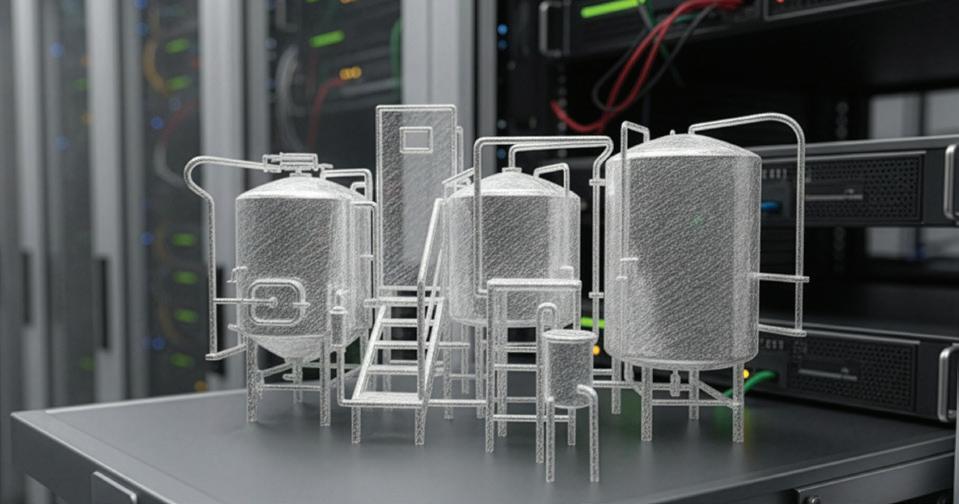
THE NEW GENERATION OF DISTRIBUTED CONTROL SYSTEMS
As industrial automation demands more openness, flexibility, and interoperability, COPADATA’s zenon software platform emerges as a key enabler. With its OpenDCS approach, zenon is redefining how distributed control systems (DCS) are built and operated – to be modular, vendor-independent, and future-ready.
THE FUTURE IS NOW: INDUSTRIAL AUTOMATION IS BEING REDEFINED
Industrial automation has entered a new era. No longer limited to machines performing repetitive tasks, it is evolving into a sophisticated, intelligent ecosystem where people, machines, and data work together in real time. As industries face global economic uncertainty, labor shortages, and the need to transition to Net Zero, automation is proving to be a cornerstone of resilience, innovation, and sustainability. A powerful wave of transformation is reshaping how manufacturers think. And some of its trends are enabled by OpenDCS.
At the heart of the change, we see human-centric design, flexibility, and digital intelligence. The goal is to empower people, not replace them. Human-machine collaboration is taking on new significance, with AI and robotics augmenting human capabilities. Workers are reskilled to interact with advanced tools and systems, creating more inclusive, efficient, and sustainable work-
places. In this emerging model, human insight complements machine precision, allowing for smarter, safer, and more socially responsible production.
Industrial automation is also being transformed by the shift from rigid, hardware-driven systems to flexible, software-defined platforms. Traditional control systems are being replaced by modular, programmable platforms that support fast reconfiguration and integration. This software-centric approach goes together with the rise of modular production systems.
Open standards like Module Type Package (MTP) empower manufacturers to design flexible, scalable production lines that can adapt to new product variations without significant downtime. These systems are particularly valuable in industries with high customization demands, where agility and responsiveness are important.
Another key development is the growing adoption of digital twins. These virtual replicas of physical systems allow manufacturers to simulate production envi-
ronments to optimize operations. McKinsey projects a compound annual growth rate of over 40% for digital twins through 2030, underlining their strategic value.
At the same time, artificial intelligence (AI) is fast becoming the brain of industrial automation. Its role extends far beyond predictive analytics. AI is now powering generative design, intelligent robotics, and autonomous quality assurance. AI-driven analytics are enabling companies to respond more intelligently to changes in demand, equipment conditions, and supply-chain dynamics.
Supporting this transformation is the rise of lowcode and no-code development platforms. These tools allow users without formal programming backgrounds – such as plant engineers and technicians – to build and adapt automation solutions quickly and efficiently. By reducing reliance on specialist developers, these platforms democratize innovation and shorten the development cycle.
Together, these advancements point to a fundamental shift in industrial automation. What lies ahead is not just faster or more efficient production, but a smarter, more flexible, and profoundly human approach to manufacturing. The factories of the future will be adaptive, responsive, and deeply interconnected – built not only to produce, but to evolve.
In this new era, success will belong to the companies that embrace automation as a strategic framework for innovation. The future of industry is more intelligent, collaborative, and sustainable.
THE SHIFT FROM HARDWARE-BOUND TO SOFTWARE-DEFINED
Within the context of this changing industrial environment, we see the shift to software-defined automation as being a key catalyst, enabler, and accelerator. Traditionally, a DCS combines dedicated hardware and software into a tightly integrated system. On largescale applications, such as in the oil and gas industry, this has worked well – until now. For smaller production lines, these systems have always been challenging for maintenance and supervision reasons. In pharmaceutical processes, increasing complexity and demands for modularity, interoperability, and faster innovation are pushing the limits of legacy DCS.
zenon OpenDCS represents a fundamental shift away from static, vendor-specific environments and toward flexible, future-ready automation. It offers a software-defined, hardware-independent alternative that breaks free from rigid architectures. Built with open standards and modular engineering principles, it transforms process automation.
THE CHALLENGES OF TRADITIONAL DCS
Many pharmaceutical companies face the same issues:
– High initial investment in hardware and licenses
– Complex architectures that slow down implementation
– Vendor lock-in that limits choice and drives up costs
– Limited scalability in adapting to future needs
– Difficult IT/OT integration, often resulting in data silos
– Risk of obsolescence, especially in fast-evolving markets
Architecture hardware-centric, hierarchical
modular, flexible
Integration proprietary, tightly coupled open, interoperable, vendor-agnostic
Scalability hardware-bound, limited easily scalable, software-driven
Adaptability requires hardware change agile via updates and configuration
Data Handling siloed, limited IT/OT fusion unified, real-time data flows
Lifecycle long, rigid
Engineering
Figure 1: Classic DCS vs. zenon OpenDCS.

WHY OPENDCS CHANGES THE GAME
zenon OpenDCS is not just a new product – it’s a new approach. Rather than bundling together hardware and software, zenon OpenDCS delivers the software component only. It’s capable of running on virtual machines, standard PCs, or existing infrastructure. It supports over 300 protocols, including OPC UA, ISA 88, Profinet, and the MTP standard – key for modular production and seamless equipment integration.
zenon OpenDCS is the first step toward full software-defined automation, enabling faster innovation, easier compliance, and continuous optimization.
SEAMLESS INTEGRATION THROUGH PREVALIDATED PLC LIBRARIES AND CENTRAL ORCHESTRATION
A key component of zenon as an OpenDCS is its pre-validated PLC libraries developed by COPA-DATA. These libraries enable integration across a wide variety of platforms using the same engineering tool, whether you’re working with:
– Virtualized PLCs in the zenon Logic 61131-3 environment
– Open Linux-based controllers with Docker installations
– Physical PLCs from manufacturers like Siemens or Rockwell zenon provides native libraries for all these platforms. This ensures smooth integration and greatly reduces engineering complexity. Moreover, the pre-qualified function blocks minimize validation efforts – a valuable benefit in regulated industries like pharmaceuticals.
If MTP-ready equipment is available, integration becomes even more efficient: the device modules can simply be dragged and dropped directly into the project. No extra configuration is required.
ORCHESTRATION STUDIO:
THE HEART OF MODULAR AUTOMATION
At the core of zenon’s OpenDCS philosophy lies the Orchestration Studio, an advanced engineering layer that extends the zenon Engineering Studio. It supports engineers in designing and orchestrating:
– Control modules
– Equipment modules
– MTP-compliant process equipment assemblies (PEAs)
Using a drag-and-drop interface, engineers can place and connect objects intuitively. The system auto-generates the underlying control logic and HMI components based on a pre-validated template project – with just a click of a button.
In addition, zenon supports the automatic configuration of batch control phases and services according to the ISA-88 standard, enabling efficient creation of recipe-based automation. This ensures standardized, structured, and scalable batch execution, further reducing engineering effort and improving consistency across modular systems. This reduces engineering effort significantly, while ensuring consistency across the project. All objects share similar faceplates and visual behaviors, enhancing usability and making operations more intuitive for end users.
Figure 2: Orchestrate processes via drag-and-drop.
SMART REUSE OF PROVEN COMPONENTS
The Orchestration Studio allows access to a rich library of pre-validated components, including:
– Symbols
– Faceplates
– Batch interfaces
These components are part of the zenon process library, which follows the MTP standard. The library includes function blocks and control modules commonly used in process automation, such as:
– Motors
– Valves
– Analog values
– Sensors
Each element is composed of a corresponding PLC function block and a zenon Smart Object, covering both logic and HMI visualization. This structure ensures consistent behavior, faster deployment, and easier validation.
By combining pre-validated libraries, drag-and-drop engineering, and MTP compliance in a single, cohesive tool, zenon OpenDCS dramatically improves integration efficiency, reduces project timelines, and increases system maintainability. It represents a significant step forward in regulated industries and beyond.
KEY BENEFITS AT A GLANCE
– Flexibility & scalability: From R&D labs to full-scale production lines, zenon adapts to your needs –without complex reengineering.
– Support for virtualization, containerization, and emerging standards: OpenDCS is built for tomorrow’s technologies.
– Simplified engineering: No-code/low-code development accelerates time-to-market.
– Cybersecurity by design: Integrated security architecture ensures resilience and compliance with regulatory demands.
– Software-defined automation: Respond to change faster than ever with automated engineering, central deployment, and hardware independence.
– OT/IT Integration: A single platform that improves response times and streamlines business processes in a secure digital network.
– zenon OpenDCS is especially powerful in modular environments. With the zenon MTP Suite, you can:
• Integrate legacy systems via MTP Gateways
• Orchestrate processes with intuitive drag-and-drop tools
• Ensure real-time compliance throughout production
The result? Greater efficiency, reduced downtime, and accelerated scale-up of new products.
CONCLUSION
The future of industrial control is open, flexible, and software-defined. COPA-DATA’s zenon software platform embodies these principles and delivers a powerful, future-ready alternative to traditional DCS architectures. As an OpenDCS, zenon empowers organizations
to modernize their operations, accelerate integration, reduce vendor lock-in, and unlock new possibilities in edge and cloud connectivity – all without compromising performance or security. Whether you’re planning a modular plant, migrating from a legacy system, or building a digital-first operation, zenon is ready to help you orchestrate your success.

STEFAN
EDER
Industry Marketing Manager
As Industry Marketing Manager, Stefan Eder is responsible for a wide range of solutions across various manufacturing industries – from Life Sciences and Food & Beverage to cross-disciplinary applications for greater sustainability with zenon.
stefan.eder@copadata.com

BERNHARD KORTEN Director Life Sciences & Process Industry
Since 2008, Bernhard Korten has been a member of the COPA-DATA team in Salzburg, Austria. As a volunteer paramedic, Bernhard always has the right medicine at hand, especially for software solutions in the life sciences industry.
bernhard.korten@copadata.com
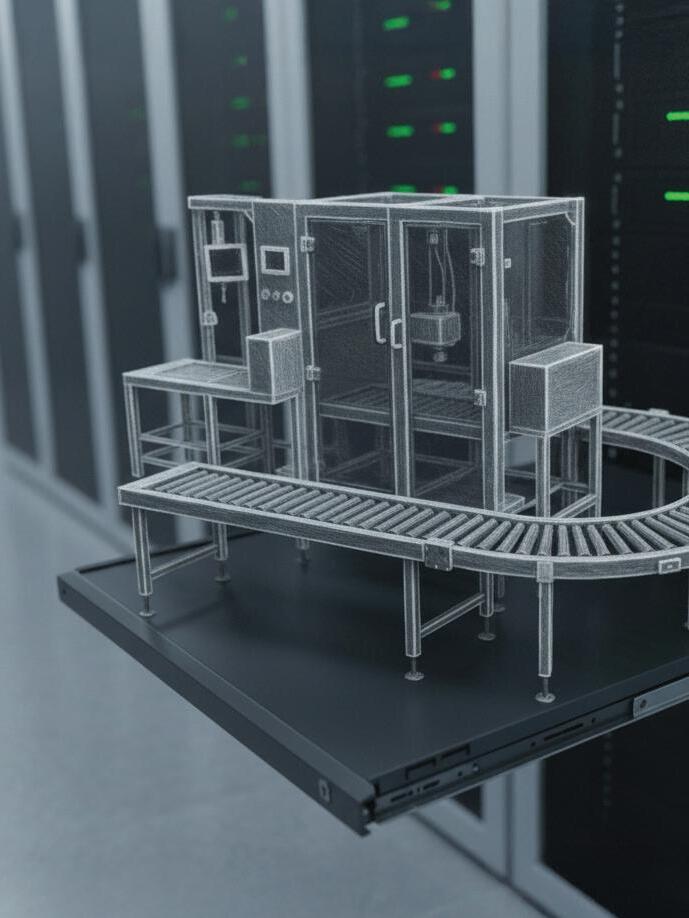

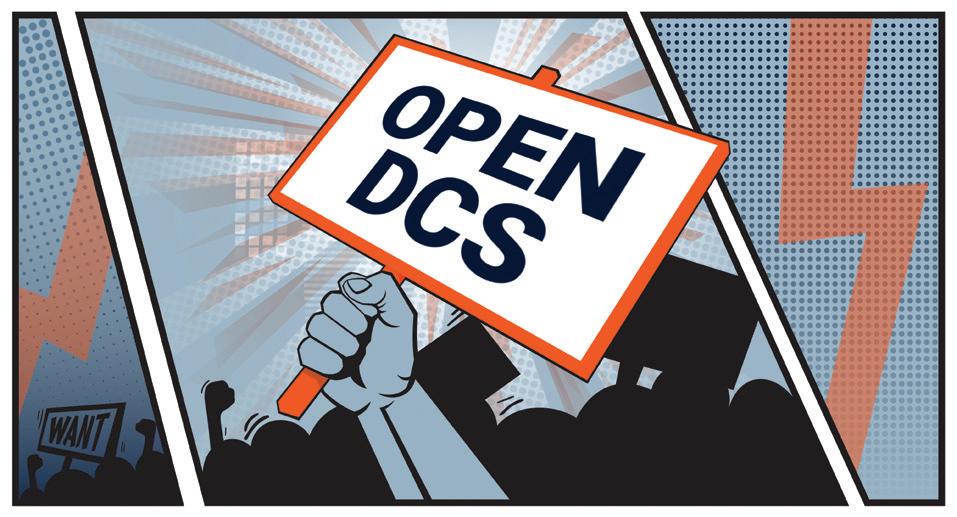
DCS IS READY FOR A REVOLUTION
Distributed Control Systems (DCS) evolved from centralized control rooms, with their distributed architectures enabling easier scalability and reliability across large plants. However, traditional vendor-bound DCS solutions are butting up against their limits in terms of cost, flexibility, and maintenance. Organizations now want to leverage new IT trends, like cheaper hardware, containerization, and open interfaces. Systems that support these new approaches – like zenon OpenDCS – enable modular, software-defined, and cloud-native automation. This shift reduces complexity, fosters interoperability, and prepares DCSs for future industrial demands.
AUTHOR: LUKAS PUNZENBERGER, DIRECTOR PRODUCT MANAGEMENT
Think about the last few control system projects you delivered. I expect there was at least one project where you started quite small and it was easily manageable by a single person. Likely, as time progresses, the requirements and expectations of this system will grow. You might want to take a more holistic approach to the extended scope. At the same time, the size of the project is steadily growing. This creates more overhead in terms of managing the different components and versions used. Maintenance and clearly defined interfaces become increasingly important. To have a chance of managing this large-scale project of yours, it all comes down to the idea of dividing and conquering within one system.
THE ROLE OF A DCS
The history and evolution of DCSs reflects this common engineering experience. At the center, there is a set of pre-validated programming blocks, marking the
foundation of the project. Depending on the size of the project, these configured blocks are then run on a dedicated controller with an operating station for human interaction. One could say that the smallest instance of a DCS is the equivalent of that of a PLC and an HMI. Dedicated controllers are responsible for a small area, in some sense independent, which are centralized within one control room. For decades, DCS solutions have been scoped to cover large-scale plants, controlling several thousand actuators and sensors. The DCS will also usually offer built-in historian and recipe management functions, all within one system. The capabilities to manage this magnitude of equipment and stations sits within one overarching system.
So far, so good. However, over the last few years, it seems that DCSs are reaching a plateau of their capabilities and very specialized functionalities. How has this happened?
A BRIEF HISTORY OF THE DCS
Prior to the use of computer-aided control, centralized control rooms were used to gather all the important signals and control the whole plant from a single location. These control rooms were quite inflexible and change was difficult. However, they provided a comfortable way to monitor plant operations.
In the 1960s, these control rooms were transformed by the integration of minicomputers. These centralized control rooms meant that equipment was centralized in one location, making maintenance easier and faster compared to distributed, unconnected controllers. However, they still had the drawback that scaling at a later stage in time was very cumbersome.
By the late 1960s and mid-1970s, Honeywell and Yokogawa introduced the first DCSs. This marked a turning point in how large-scale plants were automated. These new DCS systems were characterized by two novel approaches:
– Distributed architecture was used to separate the complex control scheme of the plant into multiple connected controllers distributed across the whole plant, increasing reliability and flexibility.
– Communication networks capable of transmitting the data from decentralized controllers to a central operator console allowed for real-time monitoring and control.
Over the last 50 years, this approach was refined. Using specialized vendor hardware which perfectly suits its ecosystem and provides a tight coupling between the designated hardware and the correlating software element, the DCS evolved.
This led to the deployment of large-scale systems with the benefit of dividing the complexity and responsibility into easily manageable chunks. Such systems were easy to expand within their own ecosystems. However, this vendor lock-in made extension and adaptation quite a cost-intensive endeavor.
This is how DCSs have been built for the last few decades. Most of the time, when a new project is planned, the same reliable and sturdy architecture with the same hardware choices is deployed.
Two of the bigger innovations within the last decade have been the move to HMTL5-based visualization and the improved support for running different historian, batch recipes, and engineering stations within a virtual environment. While these innovations are significant, it is beginning to feel as though the DCS so far has reached its limits in terms of delivering big improvements in maintenance or engineering time.
SIGNS OF A REVOLUTION FOR DCS
As we reflect on the last ten years of DCS history, we can see that its evolution has reached a plateau in terms of
Figure 1: The tree-like “divide and conquer” approach of DCS helped to break down complexity.
capabilities. Yet the evolution of daily life never stands still – especially when software is part of it! Roughly every seven years, the IT landscape changes completely, bringing life to a new set of challenges and opportunities. It is disappointing to consider that hardly any of the current state-of-the-art technologies within the IT realm have been adopted by DCS vendors.
It is my belief that three transformative software technologies are destined to revolutionize DCS systems and the way we think about them.
1. STANDARDIZED PC HARDWARE
As per Moore’s Law, as time has progressed, computational units (i.e. CPUs) are becoming so powerful and cheap that the need for specialized hardware is almost zero. Their computational power is more than enough to replace the specialized, niche hardware that has been used for the last ten years. This delivers significant cost savings – even when we allow that the standard CPU needs to be replaced more frequently than the specialized hardware. With this comes a level playing field in which there is simply a need to choose the hardware and software which is best suited for the job – giving space for a best-of-breed mantra.
2. CONTAINERIZED ENVIRONMENTS
Nearly every DCS system uses a virtualized environment for running all the different operator stations or coordination computers within one compact server. Full-blown virtual machines are expensive in terms of resources and in terms of maintenance, when compared to a more lightweight, containerized approach.
The open container interface (OCI) defines an interface application running everything within their user context inside a “mini-VM” using the OS capabilities of the host system. This results in a very lightweight environment that is fast to deploy and change and that runs on nearly any standard PC hardware.
When combining these containerized architectures with management layers, such as Kubernetes, we can replicate the sort of environments that are built to run in the most demanding data centers around the globe, with advanced security and management built in by design.
3. OPEN INTERFACES
The third major transformative software technology trend set to transform control system environments is the one of building applications and services with open interfaces. This offers many advantages:
– Easily extensible
– No vendor lock-in
– Easier to choose the system which best suits the specific needs and availability requirements
– Community-driven
– Knowledge is easily shareable
This enables us to build systems for the future, where decisions taken five years ago during initial set-up are not that “heavy” – and it is much easier to switch to a different vendor, as desired.
TOWARDS AN OPEN DCS
If we combine these three trends, a revolution for DCSs with open approaches is ready to get going. Enter the OpenDCS.
One community-driven standard in the area of process automation is Module Type Package (MTP). This process-industry-specific standard defines a clear interface via OPC UA between skids or units and the overlying control system. It enables “Plug & Produce”, even with a heterogenous landscape of hardware, and enables the easy adaptation and expansion of existing plants one unit at a time.
INTRODUCING ZENON OPENDCS
zenon OpenDCS is a solution tailored for the life sciences sector. This software-defined and scalable solution enables centralized orchestration. It combines the core DCS functionalities, including a ready-made object library and centralized engineering, and builds on them with automated engineering and open industry standards.
In Figure 2, we can see an example of a zenon OpenDCS architecture. Different open controllers run in a containerized environment which provides fully fledged IEC 61131-3 runtime environments based on zenon Logic. zenon Logic supports the open standard IEC 61131-10 for platform-independent code exchange. This is all loaded by the centralized engineering station consisting of the zenon Engineering Studio and the zenon Orchestration Studio.
The zenon Orchestration Studio is the main entry point for fast and automated engineering. It offers builtin support for the MTP standard. Using MTP provides a way for equipment manufacturers to accompany the software interface description, the visualization, and, of course, the provided functionality using standardized building blocks. This makes such a system completely vendor-independent.
When creating the user interface, the correlating batch recipe building blocks, and the alarms, the use of MTP means it all can be achieved within a few mouse clicks. The zenon Orchestration Studio combines two worlds: the world of MTP, with its ready-made skids, and the world of customized control loops, PIDs, and recipes. Both are based on the same process library by COPA-DATA. This process library offers controller code for multiple platforms, including siemens PLCs and zenon Logic. In this way, one can create any control loops, PIDs, or custom screens using the predefined elements, as you would in any other classical DCS. For fine tuning and detailed configuration, zenon Engineering Studio is the expert tool of choice.
In this example architecture, a redundant pair of zenon Service Engines are used as the orchestration station or supervisory computer. This provides the backend functionality of Audit Trail, Alarms, and recipe creation and execution. They can be operated as thin clients, running solely in a web browser, or as thick native Windows clients.

With a built-in and certified Werum MSI interface and support for GraphQL, the integration with existing infrastructure is made easy. Simply configure the interface to the specific need.
zenon OpenDCS provides a low-code/no-code engineering environment which supports modern approaches, including containerized components running on small industry PCs or consumer hardware. Its HTML5-based visualization ensures reduced hardware and software dependencies for edge devices.
For more insights, view the exemplary demonstration in IU Magazine #43 containing a vertical farming module.* Its loosely coupled hardware and software approach is used to provide a completely cloud-hosted architecture, showcasing the flexibility of zenon OpenDCS.
ARE YOU READY FOR THE FUTURE?
In today’s challenging economic environment, organizations need to resolve the challenges of high infrastructure and maintenance costs and ever-increasing security requirements. Their limited scalability marks traditional DCSs as a heavy and expensive solution illequipped to meet today’s challenges.
The revolution of lightweight containerization, with next to no special hardware requirements, offers an ideal way to meet current challenges. In the example mentioned above, containing a vertical farming module, this loosely coupled Hardware and Software approach is used to provide a completely cloud hosted architecture.
Showcasing the flexibility of OpenDCS. By building upon open standards and leveraging cloud-native technologies, organizations can adopt best-practice Continuous Integration/Continuous Deployment (CI/CD) processes for DCS development and deployment.
Having a typical deployment environment, with development, QC, and production stages in a purely containerized environment delivers benefits for future-readiness, enabling organizations to make use of the latest technologies, such as including Digital Twins during development and QC, and easily switching throughout the different stages.
In this way, zenon OpenDCS positions life sciences manufacturers ready to realize all the benefits of current and future transformative software, approaches, and technologies.
Figure 2: An exemplary Open DCS system based on the zenon software platform.


LINUX IN THE WORLD OF AUTOMATION SOFTWARE
For a long time, only a small minority has favored Linux over Windows as an operating system. However, in recent years there has been a clear shift and the trend toward running Linux as an operating system is growing thanks to its advantages over other operating systems.
IS LINUX ONLY FOR TECHIES OR IS IT SUITABLE FOR WIDER USE?
Linux has long had the reputation of being an operating system used only by developers and IT experts with more know-how than the “average” user. It was considered unsuitable for general use: the command line interface, in contrast to the familiar user interface of other operating systems such as Windows, frightened off many. But as technologies evolved across all sectors and efforts were made to enable optimizations in a wide variety of areas, more and more people discovered the benefits of Linux. This caused attitudes to change and gave rise to the use of Linux for a range of new applications.
THE BENEFITS OF LINUX AS AN OPERATING SYSTEM
– Stability and reliability: Linux is considered to be the most stable operating system. This makes it ideal for applications where uptime is critical, such as automation software.
– Security: As open-source operating system, Linux is considered more secure than its alternatives because its large and active community allows security vulnerabilities to be identified and fixed quickly.
– Performance and resource consumption: Fewer background processes and a lightweight kernel allow the system to run with fewer resources. This allows for the use of lower-spec hardware to achieve the necessary performance for automation software, thereby reducing costs and saving energy.
– No license costs: The fact that most Linux distributions are free also further reduces the cost of use.
– Customizability: Linux’s open-source code allows hardware manufacturers to adapt the operating system to their specific needs as necessary.
– Containerization: Linux has established itself as the operating system of choice for containerized applications. It optimizes resource consumption, portability, flexibility, and many other features. The list of benefits doesn’t end there. Even those mentioned should provide some insight into why Linux’s popularity has increased over the past few years – especially to host automation software. Linux’s focus isn’t on providing the most attractive and comprehensive user interface. Linux is designed instead to be stable and reliable, using only the minimal resources necessary to operate.
LINUX IN THE WORLD OF AUTOMATION SOFTWARE
The benefits that Linux generally provides as an operating system are ideally matched to the needs of automation software. Users want the best possible stability for their systems, which must also be secure against outside attacks. Nobody wants the actual software to be down for a while just because a completely different process, which runs alongside the operating system and is irrelevant, has failed and caused problems. It is also ideal if hardware and license costs can be kept as low as possible, as performance can be focused more specifically on the actual application instead of being consumed by unnecessary additional functions. This way, budget isn’t consumed by unnecessarily high hardware specifications. The more individual hardware devices are required in different locations for a project, the greater the potential savings.
ZENON ON LINUX
COPA-DATA has also recognized the benefits of Linux and has been developing zenon for both Windows and Linux for several years. The Service Engine for the Linux operating system has been available for customers to download since zenon version 12. This Service Engine is continuously being further developed, expanding the zenon functionality under Linux with each annual update. Components and functions such as zenon Logic, the zenon Network, and IIoT services for IT-OT connectivity have now been added. A detailed list of the features supported for zenon running on Linux can be found in the info box.
LINUX CONTAINERS
Not only has Linux use become increasingly widespread in recent years, so has the use of containers for many applications. A container is a software package
that contains a specific application and all of its required components, such as libraries, configuration files, etc. When the container is started, the desired application runs in an isolated environment with all of the necessary files. They operate similarly to a virtual machine (VM) – but unlike a VM, which always contains a complete operating system, containers use the kernel of the host operating system on which they run. This means they require much less memory, resources, and processing power, which not only makes them faster to start but also reduces hardware requirements during operation. Since all of the components required by the application are already included in the package, almost all requirements for operating system versions or CPU architectures are eliminated. Containers thus simplify the selection of the hardware to be used compared to a native Linux installation directly on the device. This makes it even easier to use zenon on a wide variety of devices.
For this reason, COPA-DATA is prioritizing use in a containerized Linux environment, enabling users to run zenon in isolation with few OS and hardware restrictions and the lowest possible resource consumption. COPA-DATA specifically relies on Open Container Initiative (OCI) during development to adhere to a standard that can be used by a wide variety of container types. In addition to the recommended use of zenon in a Docker container – probably the best-known and most widely used variant – users can also implement any other container type that complies with these standards.
USING ZENON IN A CONTAINERIZED LINUX ENVIRONMENT
zenon gives project developers the unique benefit of being able to use the same engineering files on both Windows and Linux. Once a project has been created in Engineering Studio and is compatible with the Linux
Figure 1: Difference between an environment with containerized applications and virtual machines.
features, it can be used on both operating systems without additional engineering effort. Using zenon Logic, which is also available on Linux, a Linux device can also be used as a soft PLC to control machines and systems. The use of the zenon network has also been enabled on Linux with Service Engine version 15. This allows a Linux device to act as a process server for a Linux- or Windows-based client, enabling seamless integration between both operating systems.
Furthermore, IT-OT integration is provided for when running on Linux. This means that zenon IIoT Services also enable the interconnection of IT and OT when running on Linux. This ensures a comprehensive overview of diverse data from different locations.
ZENON ON LINUX – SOMETHING THAT ENDURES
In summary, there are many advantages to using Linux for automation software – especially when running the containerized versions. Furthermore, a wide range of supported features and functions is already available in zenon, including compatibility with existing Windows counterparts. zenon on Linux is, therefore, no longer a vision of the future, but today’s reality. Due to COPA-DATA’s continuous investment in development, the range of functions will continue to grow in the coming years. These options should be considered by all users in order to operate efficiently, securely, and at the forefront of technology.
I’m excited to see where zenon on Linux will take us in the future. But one thing is certain: Linux will become increasingly relevant in automation software –and no one should miss out on this leap.
FUNCTIONALITY OF THE SERVICE ENGINE UNDER LINUX
From zenon 15, the following functionalities are supported by the zenon Service Engine for Linux operating systems:
– Service Engine
• Read values
• Write values
– Logic Service
– Equipment modeling for the supported services
• Filtering of alarms and events
– Alarm administration
– Historian
– User administration
– Chronological Event List
– Selected functions and scripts
– Selected system driver variables
– Selected zenon drivers, zenon Logic fieldbus drivers, and Process Gateway
– Licensing via LicenseManagerAutomation CLI
– Simple server-client model of the zenon network
Attention: Routing and redundancy of the zenon network are not supported in the current version for Linux operating systems.
– Reaction Matrices
Limit value breaches via reaction matrices are supported.
All types of reaction matrices (multi and “simple”) are supported.
– Allocations
– Simple Client Server Model in the zenon network for Linux-supported services
– All services of IIoT Services
– Device Agent
– Diagnosis Server

DOMINIC VOITHOFER Product Manager
Dominic Voithofer has been with COPA-DATA since 2024. In his role as Product Manager, he works with his development team on functional enhancements to the Service Engine, specifically for Linux.
dominic.voithofer@copadata.com
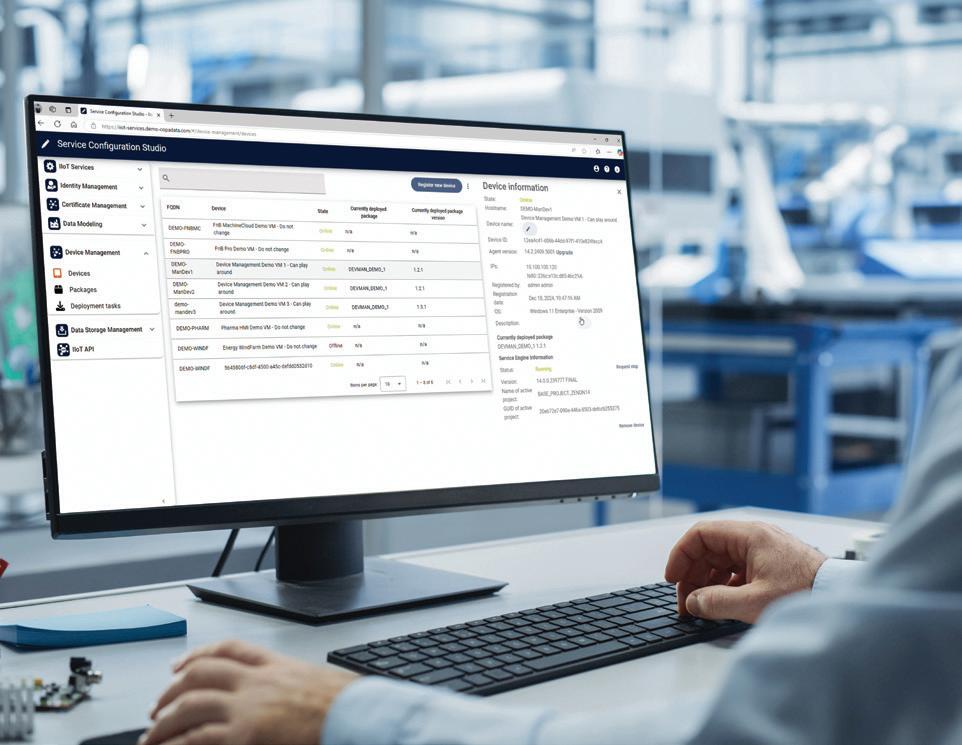
ZENON DEVICE MANAGEMENT – WHATS NEW?
How is zenon Device Management evolving? And how does it enable integration of cloud technologies with the zenon software platform? This article looks at new features of the components designed for managing, monitoring, and updating devices in an operational technology environment.
zenon Device Management is a service that handles the distribution of zenon projects and the management of zenon installations. It is part of zenon IIoT Services and is intended to serve as the central hub for connected zenon installations. COPA-DATA first introduced zenon Device Management, its existing functionalities, and its related vision in the article “Leave it to me!” in Information Unlimited, Issue 40. Since then, there have been various innovations that have enhanced and expanded the original functionality of project distribution and device overview.
This article provides an overview of the new functionalities. These include support of multi-projects, i.e. distribution of zenon integration projects and subprojects, as well as support of the Service Engine as a Docker container, and a simple onboarding tool for new devices.
MULTI-PROJECT SUPPORT
One limitation that previously existed in the functional scope of Device Management was the limit of one parallel project at a time. zenon has always been able to create integration projects and subprojects, thus
achieving a certain degree of decoupling of tasks and the functionality of the individual zenon projects. For example, it could create a hardware-specific data access layer tailored to the specific PLC controllers and data access, while maintaining a standardized integration layer above it. This can be reused for different machine variants without modification.
With zenon 15 it is now possible to use zenon Device Management to distribute such project constellations to the connected devices. During deployment, it can be specified which software package (i.e. zenon project) should function as a subproject and which as an integration project. The resulting flexibility enables additional use cases, whereby the project engineer has to know which projects should be distributed together in which constellation. zenon Device Management provides the option to store relevant information and descriptions for the associated software packages, ensuring a clear overview. The information about version numbers, description text, and label tags opens up a range of flexible possibilities.
If individual projects are no longer needed, they can be removed from the device via the Device Management web interface. It is also possible to easily change the startup project if you want to switch between different projects. The relevant information about the installed projects and the current startup project is always available in the device overview. This gives project and system engineers a constant overview of the individual zenon installations.
DEVICE AGENT AND SERVICE ENGINE AS LINUX/DOCKER CONTAINERS
Another innovation in zenon Device Management concerns support for Linux containerization, more commonly known as Docker support. COPA-DATA is investing significant development resources in the areas of Linux and containers, as these promising technologies are gaining importance in the automation industry. In the long term, they will significantly influence the way automation software is installed and operated.
The zenon Service Engine already supported Linux containers in previous zenon versions. With version 15, this support has been incorporated into zenon Device Management, making it possible to run the Service Engine and the Device Agent in a tandem configuration. This has several advantages. For example, it allows multiple instances of the Service Engine to run in parallel on shared computing resources. Compared to conventional virtual machines, the installation is significantly more streamlined and resource consumption is lower as there is no need to virtualize an entire operating system.
Another major advantage of using Linux containers is that there are virtually no dependencies on the actual operating system of the container host system. It only needs to be a Linux-based distribution and an AMD64 or ARM64 processor architecture. This allows for the use of embedded devices such as the Siemens IOT2050, Revolution PI, or Linux-based Beckhoff controllers, in
addition to conventional server and desktop hardware. This encapsulation of software dependencies also provides COPA-DATA enormous advantages in the development and testing process for the software platform. Coming back to zenon’s use with container technology, it should also be mentioned that all functionalities of zenon Device Management also work in the container version of the Service Engine and the Device Agent. Particularly when first installing containers, enhancements have been added that enable quick installation. However, successful use of the containerized Service Engine and Device Agent requires basic knowledge and understanding of containerization and the Linux command line interface (CLI). Depending on the control protocol used and the zenon project settings, it may also be necessary to specify container-specific network configurations on the device. This is necessary, for example, for the use of Layer 2 communication protocols such as EtherNet/IP or PROFINET.
ZEROCONF UTILITY FOR AUTOMATIC COMMISSIONING OF DEVICES
While information technology (IT) has been exerting an increasingly powerful influence on automation technology (OT) for many years, large parts of the industry are still in their infancy when it comes to containerization and Linux and such users require support. This depends largely on the individual company and whether they have incorporated modern IT technologies into their strategy. Automation engineers are faced with the increasing blurring of boundaries between areas of responsibility and there is a need for ever-widening expertise. To minimize the barriers to entry for technicians when commissioning embedded devices, for example, Device Management provides a ZeroConf utility for easily integrating devices with the zenon software platform.
COMMISSIONING PROCESS IN TWO STEPS
First, a chosen device is automatically loaded with the zenon components using ZeroConf, and ZeroConf is activated as an autostart feature. This step can be performed by an IT-savvy technician with basic knowledge of the Linux CLI. The prepared device can then be kept in stock, ready for later use. This means, for example, an external service provider could prepare the device and sell it as a plug-and-play product.
If the device is then commissioned by an automation technician or electrician in a subsequent step, no further knowledge of the software technology used is required. Typically, only the power supply and network connectivity will need to be established for the device so that it can communicate with any remote IOs in the OT network. During commissioning, a preconfigured USB stick containing the required access data is also plugged into the device, allowing the pre-installed device agent to register fully automatically with the zenon Device Management.
This fully automated commissioning process eliminates the need for manual steps or interventions. The
previously registered device can be loaded with the intended zenon project via central Device Management and, thus, put into operation. The automated registration process with ZeroConf is ideal for embedded devices without a display, for example, or for regular IPCs that are used in large numbers and do not differ significantly in their planned tasks.
DEVICE LOGS FOR THE IDEAL OVERVIEW
For troubleshooting, Device Management can now remotely run the System Information Collector, which collects information about the zenon installation on the target system. Currently, the System Information Collector is only available for Windows operating systems. However, COPA-DATA is working on troubleshooting and logging solutions for use on Linux and Docker. It is planned that these will also provide insight into actual system operation, with a view to using them for troubleshooting.
HOW DEVICE MANAGEMENT HELPS WITH THE NEW FUNCTIONALITIES
When considering the distribution of automation components across different devices, zenon Device Management plays a key role. The entire automation solution is, thus, an interplay of many distributed components, making zenon Device Management ideal for distributing the project configuration data. For example, zenon Orchestration Studio can be used to flexibly create projects, which can then be distributed to individual devices using zenon Device Management. These two aspects complement each other perfectly and make it easier to manage automation solutions.

MATTHIAS SCHNÖLL Product Manager
Matthias Schnöll joined COPA-DATA in 2015. He has been part of the Product Management team since 2018. As a product owner, he works on developing the zenon software platform. His main focus is on zenon IIoT Services and all cloud-related issues. He considers bridging the gap between OT and IT as one of today’s most important challenges.
matthias.schnoell@copadata.com

THE PURSUIT OF COMPLIANCE WITH EUROPEAN LEGISLATION
As a software component manufacturer with a global customer base, staying compliant with different regulations concerning cybersecurity is a constant challenge. This is true not only for COPA-DATA but also for asset owners and system integrators using our zenon Software Platform. This article aims to answer one key question: how can zenon make compliance in the European market easier and help organizations stay secure and ready for the future?
In a time of high political instability and all-time-high cybercrime rates, the cybersecurity landscape in the European Union is undergoing an important transformation. Driven by the EU’s 2020 Cybersecurity Strategy for the Digital Decade, the European Commission updated the existing Network and Information Systems Directive (NIS) legislation to the Network and Information Systems 2 Directive (NIS 2) and introduced the EU Cyber Resilience Act (CRA). Its goal? To improve the resilience of critical and non-critical installations and products in the EU bloc. These two pieces of legislation are complementary, as they intersect in some aspects and rely on one another. Yet they cover two different scopes. They are also different types of legislation. The CRA is an Act and, as such, is “good as it is” across the European market.
Meanwhile, NIS 2 is a Directive –which requires each member state to ratify it into their own law.
The CRA focuses on the cybersecurity of products with digital elements and the obligations on manufacturers of such products. In the context of Operational Technologies, it is about the suppliers of components, how those components are developed, and what kind of cybersecurity is implemented into those components. NIS 2 Directive focuses on how companies in critical sectors operate in a secure way. It’s about whole organizations, their infrastructures, and their operations. NIS 2 broadens the scope of the original directive, covering a greater number of sectors, including waste management, postal services, and manufacturing. It also strengthens cybersecurity requirements.
Noncompliant companies face severe penalties, e.g. up to 2.5 percent of global annual turnover for CRA violations. With deadlines approaching in the next few years, organizations need to define a roadmap and clear goals for implementing the Network and Information Systems 2 Directive and Cyber Resilience Act requisites.
HOW WE BUILD ZENON
The zenon Software Platform is designed to support this shift in the regulatory landscape. Built with operational resilience and security-by-design principles in mind, zenon can assist organizations in being secure and compliant with what’s to come.
The zenon Software Platform is developed following strict security standards, using COPA-DATA’s IEC 62443-4-1 certified processes.
This international standard ensures that security is embedded into every stage of the development lifecycle – from initial design and implementation to testing and maintenance. As part of these certified processes, COPA-DATA follows rigorous defect management and vulnerability communication management practices, ensuring that security issues are handled transparently and efficiently. Customers can stay informed about the latest security updates and advisories by subscribing to the COPA-DATA Security Newsletter (copadata.com/security-newsletter).
In preparation for the EU CRA, COPA-DATA has also begun publishing vulnerability advisories in the Common Security Advisory Framework (CSAF) JSON format. This standardized approach enables clear, machine-readable communication of security issues, supporting customers to maintain a strong security posture and meet evolving regulatory requirements with confidence. With this approach, COPA-DATA and zenon provide a robust foundation that helps customers protect their systems against malicious actors and eases the adaption of the upcoming regulations.
ZENON FEATURES
In zenon, user management and protection against unauthorized access is a built-in, fully integrated feature. Flexible authorization levels make it easy to define who can access which parts of the system and what actions they’re allowed to perform. This fine-grained control helps operators and asset owners to maintain a secure working environment and ensures that only authorized personnel can make changes or carry out critical operations.
With zenon IIoT Services, it is possible to use the zenon Identity Service for authentication and authorization. This decouples such functions from your projects and supports the integration with third-party identity management providers. zenon Identity Service ensures a clear separation between
zenon projects, third-party applications, and system users so that user management can be easily controlled, even in a complicated environment.
By default, zenon records all events in the Chronological Event List (CEL). This captures a broad, time-ordered, and detailed overview of what is happening across your operations at any given time. However, not all data is equally critical when it comes to security and compliance. That’s where the zenon Audit Trail comes in. zenon Audit Trail focuses on critical events, such as user actions, system changes, and adjustments to critical process parameters (CPPs). It is secure, tamperproof, and captures precise timestamps and user details, ensuring full traceability and accountability.
Furthermore, zenon’s redundancy functionalities ensure that the software platform enables continuous production and prevents data loss, even during a server failure. These capabilities are integrated into the product, thereby eliminating the need for extensive programming to achieve them. With zenon’s seamless redundancy, all tasks and data are instantly transferred to a standby server in the event of a failure, guaranteeing that no data is lost and operations continue without interruption. In parallel, zenon’s circular redundancy allows servers to back up each other across multiple projects, reducing both hardware costs and the risk of outages. This guarantees high system availability, secure data flow, and reduced hardware costs while keeping operations resilient and compliant.
zenon is posed to be a key element in the greater scope of compliance with the Cyber Resilience Act and Network and Information Systems 2 Directive. In a world of equipment built before cybersecurity became a priority, meeting today’s regulatory requirements is critical but far from easy! That’s why COPA-DATA is committed to ensuring zenon does its part in bridging this gap.

ALESSANDRO GNUTTI
Software Security Specialist
Alessandro Gnutti is a Software Security Specialist in the internal team of technical specialists dedicated to ensuring the security of the zenon Software Platform. He focuses on standards, including IEC 62443, and legislation, such as NIS 2 and the CRA, driving product compliance and communication efforts on these topics.
alessandro.gnutti@copadata.com

CONSTANTIN COLLINI
Software Security Specialist
Constantin Collini is a Software Security Specialist focused on different but complementary areas of product security. As well as being part of the internal effort dedicated to continuously improving the security and compliance of the zenon Software Platform, Constantin oversees product-side certifications and the compliance of free and open-source software (FOSS) components.
constantin.collini@copadata.com
WHAT HAPPENS WHEN YOUR DCS IS A DISCONNECTED CONTROL SYSTEM?

MARK CLEMENS
Product Manager
Connectivity
Mark Clemens has been part of COPA-DATA HQ since 2002. In his current role he is a product manager for connectivity topics. As an expert in cybersecurity, he helps connect IT, OT, and IIoT while keeping security in check. As a frequent IU author, he shares his views on the buzzwords of our time.
mark.clemens@copadata.com
In communication for process automation, you obviously want to be connected all the time. We build redundant networks to reduce the risk of losing communication. However, situations do occur where there is a connection loss. In traditional automation, this is a problem. Today, with Open DCS, it doesn’t have to be.
A distributed control system (DCS) walks into two bars. He sees an OpenDCS. Excited to meet a peer, the DCS says: “Since we’re both offline, can I buy you a drink?” The OpenDCS replies: “I might be enjoying some downtime right now, but I’m still working. I’m not open to that drink.”
Normally you shouldn’t have to explain a joke like this. If you need to explain it, it’s a good indication that it’s a bad joke. Or the person telling the joke doesn’t have the right vocabulary to explain the situation well or, maybe, because the situation is unimaginable to the joke’s recipient.
For sure, this joke does require some elaboration. The DCS walks into two bars, because it is a distributed control system. Haha. Because the original DCS is disconnected from its I/Os and is off duty, it makes the mistake of thinking that the OpenDCS is off duty too. Yet the OpenDCS is hard at work – thanks to the bars’ Wi-Fi, it is still able to establish communication with its open controller and can even retrieve the necessary batch production data after being offline.
Poor joke? Maybe. Unimaginable? Not anymore.
MANY OF US CAN TELL A STORY ABOUT WORKING FROM HOME
One of my Indian friends would go to his brother when he wanted to work from home. His brother worked in a bank and the bank had faster Internet and was not affected by rolling blackouts.
Similarly, this story of the OpenDCS “working from home” – or, rather, being located somewhere else than the open controller and its I/Os while running a batch and experiencing disconnects, yet still being able to retrieve all the relevant data – sounds very unexpected.
For a traditional DCS system, the focus is on detecting communication failures and on preventing them from happening through network design and maintenance. However, just like our colleague working from the bank, resilience can be achieved in new and unexpected ways very successfully.
STANDARDIZED COMMUNICATION PROTOCOLS EXIST THAT ALLOW OFFLINE BY DESIGN
Leaving aside store-and-forward techniques involving additional middleware, there are standardized communication protocols in the automation domain that allow communication with offline periods while retain-
ing data integrity and consistency, including order of occurrence.
– In the energy domain, DNP3 allows a DNP master to query a DNP3 outstation. It might do this once a day to retrieve some counters, for example. Meanwhile, the outstation may send critical data using the master’s dual endpoint.
– IEC 61850 allows an MMS client to activate buffered reports in the MMS server to ensure no data is lost during short network communication interruptions.
– In the general automation domain, OPC UA client-server communication can overcome short connection losses by design when the OPC UA client uses subscription-based communication. OPC UA durable subscriptions allow longer communication interruptions. However, adoption of this feature by OPC UA servers and clients seems to be limited. While energy protocols may not be the best fit for the process industry, OPC UA with durable subscriptions may not be the best choice for devices with limited system resources.
ZENON LOGIC EVOLVES TO BECOME AN OPEN CONTROLLER
To date, your typical zenon Logic project would run on the same system as the Service Engine and data exchange would be local only. In OpenDCS, zenon Logic runs with the Service Engine in a container on Linux edge devices as an open controller. GMP-relevant production data is exchanged with a redundant zenon Service Engine controlling the process.
In such configurations, it is vital that interruptions of network connectivity do not lead to alarm messages being missed or to gaps in time series data. If it does, this could have a big impact on quality control.
TCP-BASED AND THEN SOME
The majority of work involved with the lean design and implementation of a high-performance communication protocol which can sustain interruptions and meet the requirements of a variety of different use cases is on the application layer side.
Transferring events efficiently, storing events when communication fails, and receiving and processing (stored) events all play an important part. A standard choice is to make use of TCP/IP.
However, the choice of TCP/IP isn’t without its challenges. A Cloudflare blog post – When TCP sockets refuse to die – makes for an interesting read on this topic.* It will probably strike a chord with anyone familiar with the difficulties encountered when tuning a TCP connection. Even the COPA-DATA team finds ourselves experimenting occasionally, following the logic of Sir Arthur Conan Doyle: when you have eliminated the impossible, whatever remains, however improbable, must be the truth.
INDUSTRIAL EDGE COMPUTERS TURN INTO SOFTWARE DEFINED OPEN CONTROLLERS
As of version 15, the zenon Logic Service and the stratonNG driver make use of the new T5BEV protocol, giving users a new and more reliable choice – and making the zenon software platform a smart choice as an Open DCS. While highly complex DCS systems may be suitable for some use cases, using low-cost hardware combined with software-defined automation takes away the need for more complex architectures. With some forward thinking, the traditional DCS may just have retired permanently to a bar (or two).
With version 15, the zenon Logic Service and the stratonNG driver make use of the new T5BEV (T5 Buffered Event) protocol on TCP port 12000. For each variable, an option can be enabled, to buffer events on disk, in case of a connection loss. Events are transferred automatically after the connection is re-established when both Logic Service and stratonNG driver have continued to run.
This enables the recording of past alarms that occurred while the connection was interrupted, together with the corresponding timestamps of occurrence. Spontaneous archives started and stopped via functions for batch recording are filled with the buffered values after the connection is re-established. By default, a period of 96 hours is retained on disk after which the client is considered permanently lost and buffered events are removed. The previous eventbased protocol may still be used for backwards compatibility. *
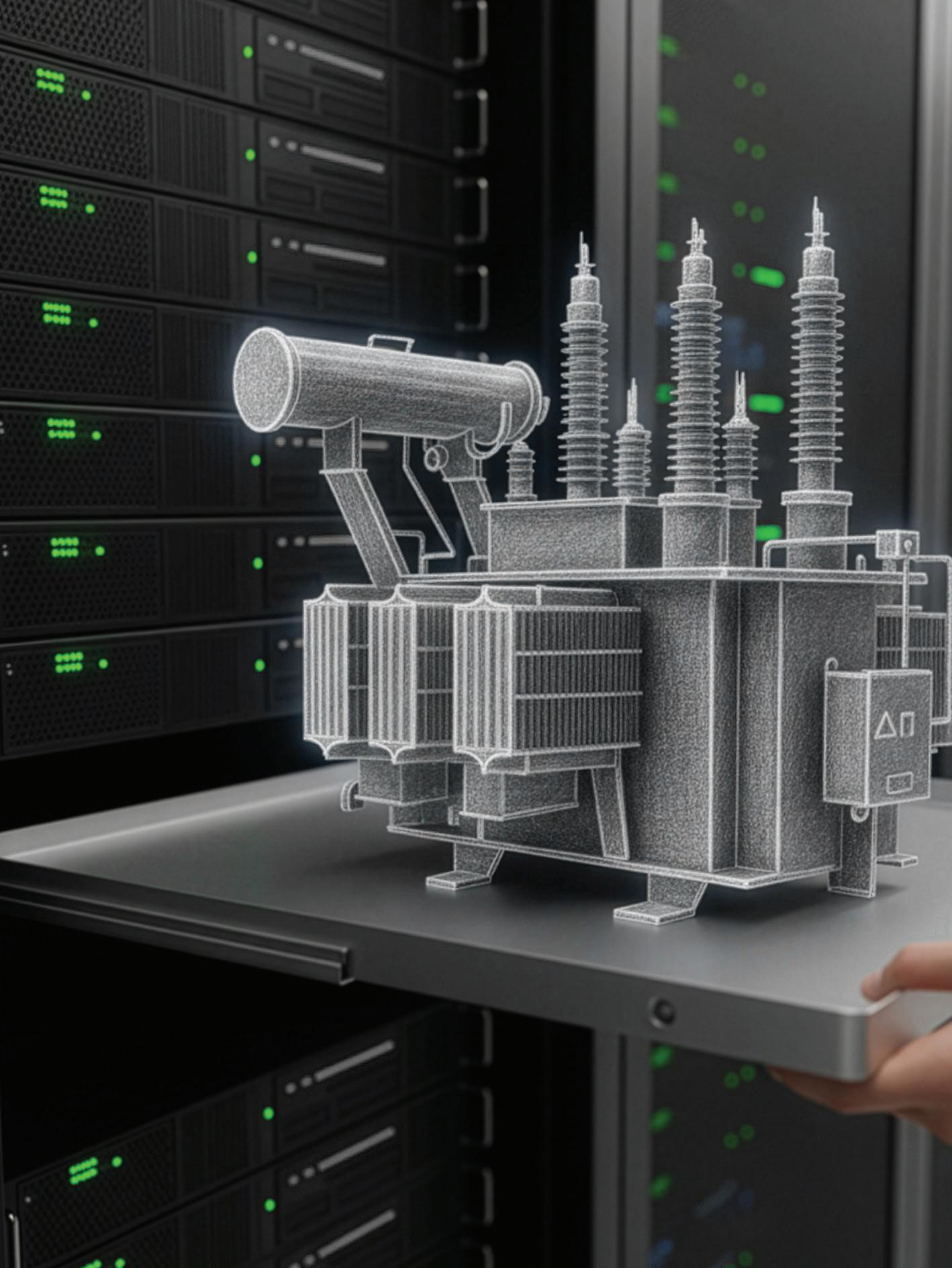

INDUSTRIES & SOLUTIONS
SUSTAINABILITY COLUMN
IN CONVERSATION WITH KIVA ALLGOOD: A PIVOTAL MOMENT FOR GLOBAL MANUFACTURING
COPA-DATA is a partner of the World Economic Forum’s Centre for Advanced Manufacturing & Supply Chains (CAMSC). The Centre drives responsible industry transformation by uniting global manufacturing and supply chain leaders to share best practices, spark innovation, and scale impact. In this exclusive interview we talked with Kiva Allgood, World Economic Forum (WEF) Managing Director, a visionary shaping the global ecosystem of sustainable development.
INTERVIEW: EMILIAN AXINIA, DIRECTOR INDUSTRY MANAGEMENT, SUSTAINABILITY SOLUTIONS
Emilian Axinia: What inspired you to take on a leadership role in shaping the global manufacturing ecosystem?
Kiva Allgood: Throughout my career, I’ve been driven by the belief that technology, when applied thoughtfully, can solve some of the world’s most complex challenges. Manufacturing sits at the intersection of innovation, sustainability, and workforce development. It has the power to lift entire communities and reshape economies. At the World Economic Forum, I saw an opportunity to bring together public and private sector leaders to accelerate a new kind of industrial transformation, one that is more inclusive, digitally enabled, and sustainable. That’s a mission I feel deeply connected to.
We all see that the world is changing quickly. What does that mean for manufacturing industries?
It means manufacturers must become more resilient, more adaptable, and more connected than ever before. Geopolitical tensions, climate disruption, tech advancement, and shifting talent dynamics are reshaping what competitiveness looks like.
Traditional operating models, many of which were built for cost-efficiency, no longer suffice. We’re seeing a shift toward systems that prioritize agility, digital integration, and the ability to continuously evolve.

KIVA ALLGOOD World Economic Forum
Kiva is a senior technology executive with over 25 years of global experience in leading-edge technology companies with a passion for advanced technology adoption and strategic impact. Kiva is Managing Director and Head of the Centre for Advanced Manufacturing and Supply Chains, World Economic Forum, where, together with her team and partners, she helps deliver on the Centre’s mission.
A new report from the World Economic Forum, From Shock to Strategy: Building Value Chains for the Next 30 Years, explores this transition in depth. It identifies eight key forces reshaping manufacturing and offers a strategic framework through 2030, 2040, and 2050. It’s a call to action for manufacturers to rethink value chains not just for today’s disruptions, but for long-term resilience and competitiveness in an increasingly complex world.
Why does sustainability remain essential in tough economic times?
Because sustainability is not just about compliance, it’s about long-term competitiveness and financial wellbeing. Resource efficiency, emissions reduction, and circularity are now key performance drivers, not side projects. The manufacturers who lead on sustainability are not only mitigating risk; they’re accessing new markets, attracting top talent, and unlocking inno-
vation. It’s a growth story and the data backs that up.
Our new report, Sustainability Meets Growth: A Roadmap for SMEs and Mid-Sized Manufacturers, reinforces this shift. It outlines a practical five-stage path for smaller firms to integrate sustainability into their core business while unlocking new sources of value, showing that sustainable practices are not a trade-off – but a catalyst for growth.
What do people in manufacturing companies need today more than ever?
The most successful manufacturers today are those that empower their workforce, particularly frontline talent, with the tools, training, and voice to be active participants in transformation. That means investing in education, redesigning roles around people-centric technologies, and creating clear career pathways that make manufacturing an attractive, high-tech, high-impact career choice for future generations.
How do you tackle these global challenges?
In the Centre for Advanced Manufacturing and Supply Chains, we bring together leaders from business, government, academia, and civil society to co-create solutions – whether it’s helping small and mid-sized manufacturers to decarbonize, scaling the adoption of frontier technologies like AI, developing a high school curriculum for critical industrial skills, or building new frameworks for resilient value chains. We’re not just diagnosing problems; we’re activating ecosystems to solve them at scale.
What can you tell us to get a bit closer to your initiatives?
Our Centre drives change across four strategic pillars, with focused initiatives under each one that go deep into the “how.”
To build resilient value chains, we’re exploring how companies and countries can enhance their manufacturing readiness and resilience through the Future-Proofing Global Value Chains initiative. We annually publish the a Country Readiness Report, helping countries and regions understand the critical components required to drive economic growth from supply chain and manufacturing value chains.
In technology and innovation, our Global Lighthouse Network recognizes the world’s most advanced manufacturing sites and supply chain ecosystems and convenes their leaders to share real-world insights on how to scale technology across five critical dimensions. Building on this, the Lighthouse Operating System offers a practical framework for a new, continuously evolving operating system, while the Next Frontier of Operations initiative explores how emerging technologies are redefining the future of production. This future is more open and connected than ever, truly reshaping how we think about making and moving products.
Our people-centric transformation initiatives include Frontline Talent of the Future, which supports
innovations in attraction, retention, and upskilling, while New Generation Industry Leaders empowers emerging manufacturing leaders to shape a more inclusive future industry.
Finally, in our sustainable systems pillar, the Industry Net Zero Accelerator and Circular Transformation of Industries help companies to embed decarbonization and circularity into their growth strategies, while our SME Sustainability Accelerator provides critical support to smaller firms on this journey.
What is the role of companies such as COPA-DATA in this context?
Digital technology providers play a practical role in supporting sustainable transformation. Their digital tools help manufacturers access real-time data, improve operational efficiency, and integrate sustainability into daily processes. Capabilities such as energy monitoring, automated reporting, and system integration are clearly increasingly important as manufacturers seek to scale their efforts. Technology providers are part of the broader ecosystem driving innovation and industrial change. They are not just vendors, they are strategic partners in shaping the future of sustainable industry and helping companies realize the value of data.
Great! From our experience, I can confirm that is happening. What would you like to share with our readers in manufacturing?
This is a defining moment for our sector. Manufacturing has the potential to lead industry through today’s biggest transitions, towards sustainable energy, more resilient supply chains, and inclusive growth. But this will require bold leadership and continuous learning. I encourage every professional to see themselves as part of this transformation. No matter your role, you can help shape a more sustainable, inclusive, agile, and human-centered industrial future.
We invite leaders across the sector to join us in building and scaling open industrial ecosystems. Whether by applying to join the Global Lighthouse Network – our next round of applications opens in December – engaging with our community of Chief Operating, Supply Chain, and Procurement Officers, or getting involved in one of our many initiatives, there are multiple ways to contribute and collaborate.
Thank you, Kiva! Do you have a closing message for young minds?
To the next generation: manufacturing needs you. It’s no longer what your parents or grandparents might imagine; manufacturing jobs are not repetitive, dirty, or dangerous. They sit at the heart of robotics, AI, frontier technologies, and sustainable transformation. Manufacturing is where some of the world’s most exciting challenges are being tackled head-on. If you’re looking for purpose, impact, and innovation, this is the field for you. Get involved and help to shape the future.

SUBSTATION VIRTUALIZATION
How is substation automation developing so that it is fit for the grids of the future? Software has been a catalyst for years; it has shaped many different sectors and industries. Software helps companies bring innovations in products and services to market and it helps improve productivity. Countless examples highlight the tremendous potential that can be harnessed through digitalization, virtualization, and the networking of systems. The continued success of the energy industry depends, to a large extent, on the power to innovate with information technology.
In this article, you’ll learn how substation operators can benefit from centralized and virtualized solutions, the challenges related to their implementation, and how software from COPA-DATA is helping users to navigate this transition effectively. As the smart grid evolves, it is becoming very clear that software in the form of tools, algorithms, and platforms has a fundamental role to play. Numerous entities in the modern power grid have to communicate with each other, report yields or consumption, assess forecasts, trade energy quotas, optimize energy flows, exchange control signals, and much more. Even when operating what appears, at first glance, to be rather rigid infrastructure assets – such as high-voltage power lines or substations – new methods are slowly but surely spreading to the most sensitive areas of equipment automation.
CHALLENGES FOR NETWORK OPERATORS
Until last year, we averaged five new substations a year, this year there are eight, and next year there will be 14.
The people in charge at the network operators are telling us something like the following: grid expansion and modernization are in full swing and they are desperately looking for resources to handle this workload. Moreover, once up and running, every system has to be meticulously monitored and maintained. This is becoming increasingly challenging given the growing fleet of systems. The rising energy demand and the requisite integration of decentralized, renewable energy sources are challenging network operators and energy suppliers at all levels.
Speaking of renewable energy sources, it is well known that photovoltaics and other systems connected to the grid at different locations supply inconsistent amounts of energy depending on weather conditions. The resulting dynamics of energy flows in the power grid also affect the substations and their monitoring and protection systems. The focus here is thus to develop new concepts that can accommodate this dynamic.
CENTRALIZATION OF PROTECTION TECHNOLOGY
Today’s substations contain numerous devices that perform a range of tasks. Protection units, such as intelligent electronic devices (IEDs), play a key role in this context. Based on predefined protection functions, they monitor the integrity of the respective field (incoming lines, outgoing lines) directly on site or perform cross-departmental tests (transformer, busbar, differential line protection). In an emergency, they can trigger the relevant protective measures or inform other protection units and higher-level systems. Naturally, these devices have to work extremely reliably and quickly. Because modern substations require as many as 30 or more IEDs, depending on their size and design, the installation, configuration, necessary tests, and ongoing maintenance of these units represent considerable costs. This is where a centralized architecture can deliver benefits. All protection unit instances from the bays are “collected” and consolidated on a common, central server in the substation. Only the units needed for digitally connecting the primary equipment remain in the bays themselves. For example, so-called merging units (according to IEC 61850 nomenclature) are used to trans-
mit measured values. ”Switch control units” provide status information or provide the control interface for high-voltage switches. It is obvious that this centralization can help to simplify the configuration and maintenance of the protection functions. Another advantage is the flexible and direct communication between the functional software units on the central server. The following table shows examples of station-level protection functions that benefit from a centralized arrangement [1]:
PROTECTION AND ANALYSIS FUNCTIONS THAT RELY ON MEASUREMENTS FROM MULTIPLE FEEDERS –
Differential protection, e.g. for busbar
– Sensitive directional earth fault protection, e.g. for intermittent faults
– Protection against faults with low fault current magnitude, e.g. high impedance earth faults
– Islanding operation and loss-of-mains protection when islanding is not allowed
– Fault locator
ADVANCED FEATURES
– Station-wide disturbance recorder
– Automatic recalculation of protection parameters based on topology and DG changes, adaptation of protection application
– Advanced condition monitoring and asset management support
– Cybersecurity monitoring and protection
– Station-level self-supervision
The proposal to centralize security technology is not new; it was first explained and discussed approximately 50 years ago [2]. In addition, the approach by itself is not a vendor-agnostic solution. However, virtualization technology can help to achieve vendor and technology independence.
VIRTUALIZATION
In information technology, virtualization is generally referred to as a “decoupling of hardware and software”. Specifically, it involves encapsulating a function (e.g. an operating system, a specific application, or even a security function) in a standardized software component that can be deployed to any host, where it can be managed and operated.
An example:
In the past – let’s say, before the introduction of the iPhone in around 2006 – mobile phones had a simple design. Their primary purpose was to make phone calls or send text messages. And, of course, there were features to support these functions, such as an address book, notes, and a calculator. By the way, no one would have voluntarily spent more than ten minutes a day on such a device. The key point here is that these early mobile phones were shipped by the manufacturer with a fixed software package installed that could not be modified or expanded. The function of the mobile phone was thus determined by the manufacturer.
Modern smartphones, on the other hand, function as a platform for a variety of features and applications chosen by the user. Whether I want to use my smartphone today for making phone calls, gaming, or as a spirit level is up to me. The corresponding applications come from the manufacturer’s respective ecosystem or from external developers and providers. As a result, the functionality of the smartphone can be expanded or modified by the user at any time – using software in the form of virtualized applications or apps.
…back
to substation automation
Today, we predominantly find hardware-based standard components such as IEDs or remote terminal units (RTUs). These, as in the above example of the classic mobile phone, are typically fully preassembled by the manufacturer and can be configured by a protection engineer for the specific application. Functional expansion after delivery is generally not planned, let alone the integration of third-party functions. The virtualization of protection units or functions means that now the various automation and protection functions for a substation are not delivered and activated “on the unit” but are provided instead as freely usable software components. Together with the aspect of centralization explained above, this results in a central and open hosting platform on which the various automation and protection functions, as well as higher-value applications such as HMI or cybersecurity, can be flexibly combined.
OPPORTUNITIES AND CHALLENGES OF VIRTUALIZED SOFTWARE-DEFINED SUBSTATIONS
What are the advantages of a centralized and virtualized architecture for users and vendor markets? What initial challenges does this approach pose? And what solutions need to be developed to use this solution in production? Here is a selection:
OPPORTUNITIES
–
Hardware-independent approach reduces the need to keep spare units on hand and makes spare parts management more efficient across the business
– Better scalability in light of required new projects and modernizations
– More flexibility through software-defined configuration and reconfiguration
– Faster commissioning through uniform, software-supported processes
– Creating a platform for higher-value applications such as advanced analytics, predictive maintenance, and machine learning
– Innovation through new market participants, introduction of new hardware and software technologies
CHALLENGES
– Providing uninterrupted operation and ensuring proper redundancies, particularly for PAC components
– Parallel management of different generations of systems, such as conventional, digital, and virtualized systems on a long-term innovation path
– Building the necessary expertise in dealing with virtualization technologies and strengthening IT-OT harmonization
Establishing effective standards to ensure maximum impact of a vendor-neutral approach – important example: IEC 61850
As with any technology transition, substation virtualization also presents a number of challenges. Because early concepts based on IEC 61850 were discussed in the mid-2000s but the first (pilot) applications were not put into production until around 2020 [2], we can assume that the industry will have a long way to go before this technology reaches maturity. Various standards and working groups provide support along the way. In particular, the IEC 61850 standard for digital substations provides guidance and clarity when it comes to combining hardware and software components from different vendors in a virtualized, software-defined substation.
Comprehensive IEC 61850 Support
IEC MMS and GOOSE protocol
Top-Down and Bottom-up Engineering
SCL Import, Automatic Project Creation
Template / Object Libraries
Windows and Linux compatibility
Hypervisor and container deployment
Modular architecture: Multi Server / Multi Client, Protocol Gateway, 61131-3 Logic Engine, Device Management
Web and IT standards support
ZENON SOFTWARE PLATFORM: A FLEXIBLE PARTNER ON THE ROAD TO A VIRTUALIZED FUTURE
Substation virtualization provides a plausible answer to many of the challenges facing network operators. Working groups, studies, and a growing number of practical application examples demonstrate that the industry is increasingly researching and expanding on this technology. The goal is to create longterm plans, concepts, and processes. Nevertheless, the industry has to keep existing facilities up and running at all times.
The zenon software platform provides the best possible framework to help network operators navigate this transition. As a vendor-agnostic and technology-agnostic system, zenon helps build bridges between the different generations of solutions, regardless of whether they involve components for conventional, digital, or virtualized substations. Users benefit from a number of advantages, including:
– zenon is modular: Components such as the substation server, native clients, HTML5 web servers, protocol gateways or the IEC 61131-3 soft PLC can be flexibly distributed across different hosts.
– zenon runs in virtual runtime environments: Whether running on Windows or Linux on classic on-premises hosts, virtual machines, or in Docker containers, zenon services can be operated on all platforms.
– zenon supports important IT and cybersecurity standards Central user management, patching, protocol encryption and authentication, reporting of security-relevant events, and much more – zenon’s range of features allows it to be integrated securely and seamlessly in modern IT management solutions.
– zenon supports IEC 61850: Comprehensive MMS server and client communication, and even GOOSE, are available in zenon. Flexible tools for both top-down and bottom-up engineering processes pave the way for efficient engineering and vendor-agnostic substation automation.
– zenon helps with implementation and standardization: Templates and platform standards can be implemented individually and across technologies. This reduces complexity and ensures consistent interfaces, even in heterogeneous system landscapes.
IT’S TIME TO SWITCH GEARS
The centralization and virtualization of substation automation represents a promising approach that, in light of the current challenges, is increasingly being adopted, tested, and implemented throughout the industry. The zenon software platform provides a flexible foundation for this, enabling users to securely operate existing systems and gradually modernize them, while at the same time paving the way for the substations of the future.

STEFAN HUFNAGL Industry Specialist Energy
Industrial automation is the central focus of Stefan‘s professional career. After working as an application engineer for several years, stages in innovation and product management followed. Stefan has been part of the COPA-DATA team since 2013. As a member of the Energy Industry Team, he deals intensively and openly with the trends and challenges in this industry.
stefan.hufnagl@copadata.com
Seamless integration with zenon
Figure 2: Cross generational substation automation with zenon.
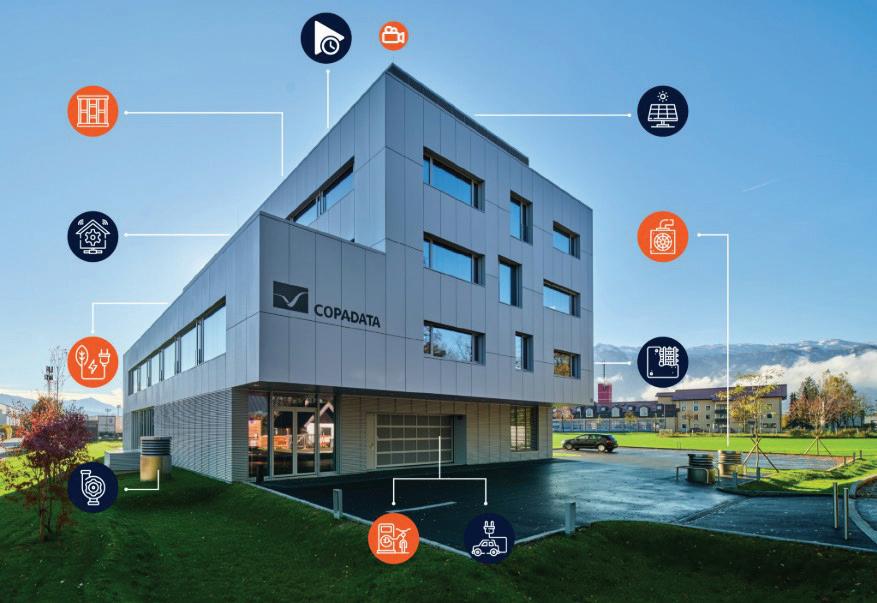
AUTOMATED ENGINEERING FOR SMART BUILDINGS
As buildings grow smarter, their engineering grows more complex. Manual methods can’t keep up with rising demands for efficiency, scalability, and sustainability. This article explores how virtual PLCs and automated engineering unlock a new era of flexible, future-ready BMS.
SMART BUILDINGS: VIRTUAL PLCS & AUTOMATION
From manual planning to intelligent automation, the evolution of building control systems has been shaped by two drivers: cost efficiency and time savings. But as buildings become smarter, their engineering becomes more complex. How do you design, maintain, and scale a modern Building Management System (BMS) without getting lost in code, vendor lockins, or outdated hardware? The answer lies in combining virtual PLCs, automated engineering, and modular software design.
WHY CHANGE THE WAY WE BUILD SMART BUILDINGS?
In traditional building automation projects, every modification (from layout changes to system upgrades) often led to time-consuming rework in both PLC programming and in creating the graphical interface (visualization). With modern digital buildings, the pace of change is faster and the expectations are higher. How can engineering keep up?
That’s where virtualization and automated engineering tools step in. By decoupling logic from hardware and leveraging project gen-
eration wizards, building automation becomes faster, leaner, and far more adaptable. A “Virtual” PLC or “Soft” PLC exactly addresses this challenge.
WHAT ARE VIRTUAL PLCS AND WHY DO THEY MATTER?
A virtual PLC is exactly what it sounds like: a software-based controller that runs on standard IT infrastructure instead of dedicated, proprietary hardware. What does this mean in practice? It means that instead of relying on a single vendor’s device – often with long lead times or compatibil-
ity issues – you can run your automation logic on x86-64 platforms or Linux-based devices, using software that adheres to standards like IEC 61131. With zenon Logic, no third-party tools are needed and your engineering stays in one streamlined environment. Virtual PLCs can also be containerized — for example, the zenon Service Engine can run in Docker containers, which isolates services and dependencies, speeds up deployment, reduces resource usage, and allows scalable, consistent rollout of updates.
FROM HARDWARE-TIED TO HARDWARE FREEDOM
What happens when your hardware supplier discontinues a product? Or when you need to deploy a building control system next week, but delivery times are two months out?
This is the reality for many brownfield and greenfield projects. With a virtualized approach, you avoid hardware dependencies and gain the freedom to scale or modify your system using standard components – without starting from scratch. Your project team can deploy up-
dates, make adjustments, and maintain control without waiting on third parties.
SCALABILITY WITHOUT REENGINEERING: A LINUXBASED APPROACH
Imagine a controller architecture that grows with your building. Start with one controller for a single floor. Then, expand to a campus of connected smart buildings. By using Linux-based controllers like the Siemens IOT2050 or Beckhoff CX9240, you create a scalable, flexible hardware architecture.
Projects can be structured by floor, by room, or by function, and the modular design of zenon means everything works together, no matter how much or how often the building grows. You’re no longer boxed in by physical infrastructure. You’re free to evolve.
HOW CAN AUTOMATION BE... AUTOMATED?
Engineering a building often starts in spreadsheets. So why not keep it that way? With a zenon wizard, an Excel list becomes the foundation of your automation project.
You define your rooms, your devices – valves, sensors, dampers, lights – and the wizard builds a fully-functioning visualization and control functions by using elements from the BMS library, complete with PLC logic. What once took days or weeks is now up and running in hours.
WHAT’S INSIDE THE ZENON BMS LIBRARY?
Underpinning this automation is the zenon BMS Library, a powerful collection of Smart Objects representing key building components. Currently, these packages include:
– Symbols and faceplates
– Control logic and variables
– Integrated behaviors and visuals
They aren’t just reusable – they’re version-controlled and ready for plug-and-play engineering. The result? Faster development, standardized quality, and fewer errors.
CAN IT WORK IN EXISTING BUILDINGS TOO?
Absolutely. While the concept shines in new builds, it is also effective in brownfield scenarios. In

smart objects, an air cooler, a valve, and a heater, each displayed with their respective process-related information on faceplates (pop-ups). These faceplates highlight key operational data and parameters, demonstrating how smart objects provide real-time visibility and control within the system.
Figure 1: The image shows three
cases where legacy systems need to stay in place, you can still use zenon’s visualization and Smart Objects (without the embedded logic) to create a uniform interface across both old and new systems. This bridges the gap between generations of equipment without disrupting current operations.
WHAT DOES THE ARCHITECTURE LOOK LIKE?
A typical configuration includes:
– A redundant zenon server pair for high availability
– Communication over standard zenon protocols
– Linux-based controllers interfacing with field-level I/Os
– Optional integration with existing PLCs
– Web Visualization Service (WVS) for browser-based control via HTML5
With WVS, building managers can access dashboards, KPIs, and trend data directly from their phones or desktops – whether it’s to adjust lighting or to review the
past 24 hours of HVAC data or anything else. The system is robust, yet intuitive.
SUSTAINABILITY:
MORE THAN A BUZZWORD
Sustainability matters for building and facilities managers, because buildings are responsible for a large share of the world’s energy consumption and carbon emissions. The World Economic Forum estimates that buildings are responsible for 40 percent of global energy consumption and a third of greenhouse gas emissions.1 To meet EU and global sustainability targets, we need systems that monitor, visualize, and optimize energy use –not only during commissioning but throughout the building’s life.
Smarter BMS designs provide insights to fine-tune schedules, detect wasted energy, and drive investment in efficient upgrades. By shifting from static hardware to dynamic, software-defined systems, we create smarter buildings – and a better planet.
Figure 2: The image illustrates an example system architecture featuring a redundant server pair alongside additional zenon components. It demonstrates the seamless integration of both greenfield and brownfield scenarios, highlighting how modern and legacy infrastructures can operate together within the same environment.

Michael Legat is an Industry Specialist for Industrial Sustainability at COPA-DATA, focusing on solutions for efficient building automation solutions. With a background in programming and project engineering, he supports global customers in implementing scalable BMS solutions.
michael.legat@copadata.com
MICHAEL LEGAT Industry Specialist Sustainability
(e.g. S7 Classic H, BacNet, Allen Bradley, Rockwell, Mitsubishi, …)
Greenfield Integration
Brownfield Integration

BELIMED LIFE SCIENCE: PLUG & PRODUCE FOR STERILIZERS
Belimed Life Science is a leading manufacturer of cGMP-compliant cleaning equipment and steam sterilizers for the pharmaceutical and biopharmaceutical sectors, as well as for laboratories and research facilities. After implementing an MTP Gateway using the zenon software platform, the company’s equipment is now ready to be integrated in flexible, end-to-end systems based on the “plug and sterilize” principle.
Sterility is critical in pharmaceutical manufacturing: machine parts, containers, and packaging have to be sterilized prior to every use. This is usually done under pressure with steam in sterilizers, which are used in the pharmaceutical industry for medications and their initial packaging. To meet regulatory requirements, sterilizers must eliminate viable microorganisms.
CUSTOMER-SPECIFIC PROCESS SOLUTIONS
The type of sterilizers familiar to many of us from the dentist’s office
– mostly table-top units – are not suitable for integration in automated end-to-end solutions for large labs, research facilities, or pharmaceutical factories.
Belimed Life Science AG is headquartered in Sulgen, Switzerland, with a branch in Grosuplje, Slovenia. It specializes in solutions for cleaning and sterilization in industrial applications. The company develops and produces equipment and machines for automated cleaning and sterilization entirely in-house. Machines are typically combined with the relevant conveyor tech-
nology to create precisely tailored, customized workflow solutions. To meet the requirements of the life sciences industry, Belimed draws on its own experience, dating back to 1968, in the field of sterilization and cleaning. In 2024, Belimed merged with Steelco and now operates under the umbrella of the Miele Group.
TOP STERILIZER AS SINGLE SOLUTION
One of Belimed Life Science’s top products is the PST.2 steam sterilizer. This energy-efficient system

1: The visualization in zenon is clearly designed and ergonomic.
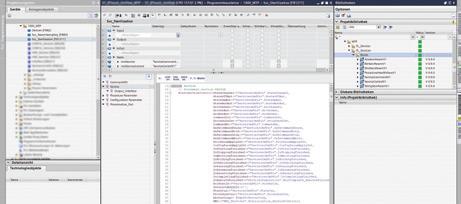
Figure 3: Using the MTP Library PL V1 for Siemens S7 from COPA-DATA, system integrator RETEL Neuhausen created an easy-to-configure MTP Gateway.
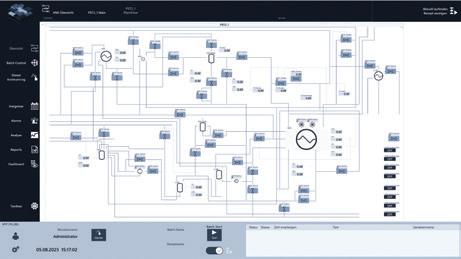
2: zenon provides users with very different views, depending on their roles.
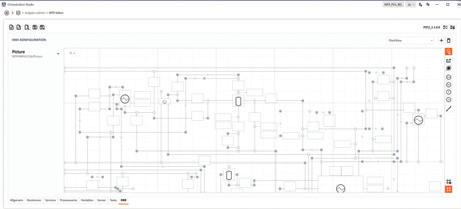
4: The MTP Gateway, which runs directly on the machine control system, makes it easy to integrate devices and services in the end customer’s zenon Orchestration Studio.
can be tailored to meet individual customer needs and is available in 19 standard sizes ranging from 300 to 3,430 liters in chamber volume. Custom sizes are also available. The PST.2 can sterilize solids and liquids using the optimal processes for each application. It is equipped with a reliable touchscreen control system that uses state-of-the-art control and process control systems from Siemens or Rockwell.
Sterilizers can provide data via numerous protocols such as OPC DA, OPC UA, Modbus, or EtherNet/ IP. By default, they provide unidirectional data. In the past, it took a lot of work to integrate them in a customer-specific, end-to-end process control system. It takes time and resources to define and roll out the required interfaces. Commissioning the system required even more resources.
EASY TO INTEGRATE WITH MTP
In order to integrate end devices easily and flexibly in end-to-end
systems, businesses in industries such as chemicals, food and beverages, cosmetics, and pharmaceuticals are turning to MTP to modularize production processes. This new data standard, created by NAMUR, the Automation Technology Association of the Process Industry, and ZVEI, the German Electrical and Electronic Manufacturers’ Association, provides conventions that can be used to describe modular equipment components in a manufacturer-agnostic manner.
The MTP standard defined in accordance with VDI/VDE/NAMUR 2658 consists of a uniform description of the information for the individual modules. This includes which data objects should be recorded and which services should be executed. It also includes the interfaces in the form of MTP files. In addition to the manufacturer-agnostic, functional description of the automation of process modules, the MTP files also contain graphical objects that can be used for visualization. This allows MTP to be integrated in com-
mon process control systems with minimal effort, making it easier to construct production facilities in a modular, manufacturer-independent manner.
COMPLIANCE WITH THE STANDARD AS A REQUIREMENT
Given these qualities, it is not surprising that MTP has established itself as a recognized standard in process-driven industries. Belimed Life Science had been planning for some time to go in this direction. The green light came when a major end customer in the pharmaceutical sector made MTP capability a requirement in their request for proposals for new cleaning and sterilization stations. Belimed uses the zenon software platform from COPA-DATA as its process control and visualization system. zenon enables seamless integration of MTP files in end-toend projects, where they can be processed like native objects. The zenon Engineering Studio devel-
Figure
Figure
Figure
opment environment features an import interface. This converts the imported MTP files into Smart Object Templates (SOT) for integration in the higher-level Process Orchestration Layer (zenon POL).
COMPLIANCE WITH THE STANDARD IS PROVIDED
“MTP isn’t a special request from one single customer or a passing trend, but rather the opportunity to equip our machines and equipment with ‘plug and produce’ capabilities,” explains Markus Maier, Sterilizer Product Manager at Belimed Life Science. “That’s why we have decided to fully comply with this forward-looking standard.”
The customer supported this project by contacting COPA-DATA and its Swiss sales partner SATOMEC AG. They, in turn, recommended teaming up with the system integrator RETEL Neuhausen AG. In close cooperation with the control software engineers at Belimed Life Science, the COPA-DATA Silver Partner implemented an easy-to-configure MTP Gateway in just a few months. This gateway runs directly on the machine control system. It is linked to the existing equipment control software and connected to a local visualization system.
MTP LIBRARY AND POL FROM A SINGLE SOURCE
One thing that greatly contributed to the fast rollout was using MTP library “PL V1” for Siemens S7 controllers, which COPA-DATA makes available for use directly in the Siemens TIA Portal engineering environment. “The S7 MTP Library PL V1 contains all the functions required to create the MTP gateway,” says Tino Rüedi, OT Solution Architect and Project Manager in the Process Technology division at RETEL Neuhausen. “With easy-to-configure modules, it promotes efficient engineering.”
Because the Process Orchestration Layer and the MTP Library are from the same manufacturer, the solution reduces coordination effort and significantly saves time in
engineering by eliminating connection tests. COPA-DATA Support also contributed to hitting the project milestones by providing advice and assistance when it came to technical challenges.
PLUG & STERILIZE
“The MTP Gateway for Belimed Life Science delivers proof of the concept. It shows that even complex, specially designed equipment can be connected easily to the existing control software,” states Tino Rüedi. “This provides added value both for Belimed Life Science as an equipment supplier and for its end customers, who benefit from being able to quickly integrate the equipment in their existing control systems.”
The results are impressive. With the MTP Gateway, Belimed Life Science’s cleaning and sterilization stations now feature a clearly structured and defined interface that supports quick and easy connection to the process control system (zenon POL) with all the variables required and end-to-end equipment visualization.
“The integration was implemented seamlessly based on the clear structure and standardized zenon modules and the MTP Library,” reports Alejandro Brunschwiler, Head of R&D Software at Belimed Life Science. “Thanks to the consistent engineering approach, we were able to get our equipment ready to be integrated in flexible, end-toend systems based on the ‘plug and sterilize’ approach.”
ABOUT SATOMEC AG
SATOMEC AG is a retail company with dealerships for automation systems. The zenon distributor, based in Cham, provides its customers in Switzerland and Liechtenstein with highly qualified support, consulting, and training. It has a large warehouse in Switzerland. Sales manager Elger Gledhill was responsible for the project with RETEL. www.satomec.ch
ABOUT RETEL NEUHAUSEN AG
RETEL Neuhausen AG is an independent engineering company with over 50 years of experience in automation and digital solutions. As a COPA-DATA Silver Partner, the company has specialized expertise in the regulated life sciences environment. With its interdisciplinary team, RETEL Neuhausen AG develops customized, validated, and sustainable solutions – from process automation to digital transformation – and positions itself as a reliable, full-service partner for its customers. www.retel.ch
HIGHLIGHTS
zenon’s MTP Gateway for cleaning and sterilization equipment from Belimed Life Science provides the following:
– Full conformity with VDI/ VDE/NAMUR 2658
– Fast and efficient integration in flexible endto-end systems
– Time savings in engineering by eliminating connection tests
– An ergonomic solution across the equipment landscape
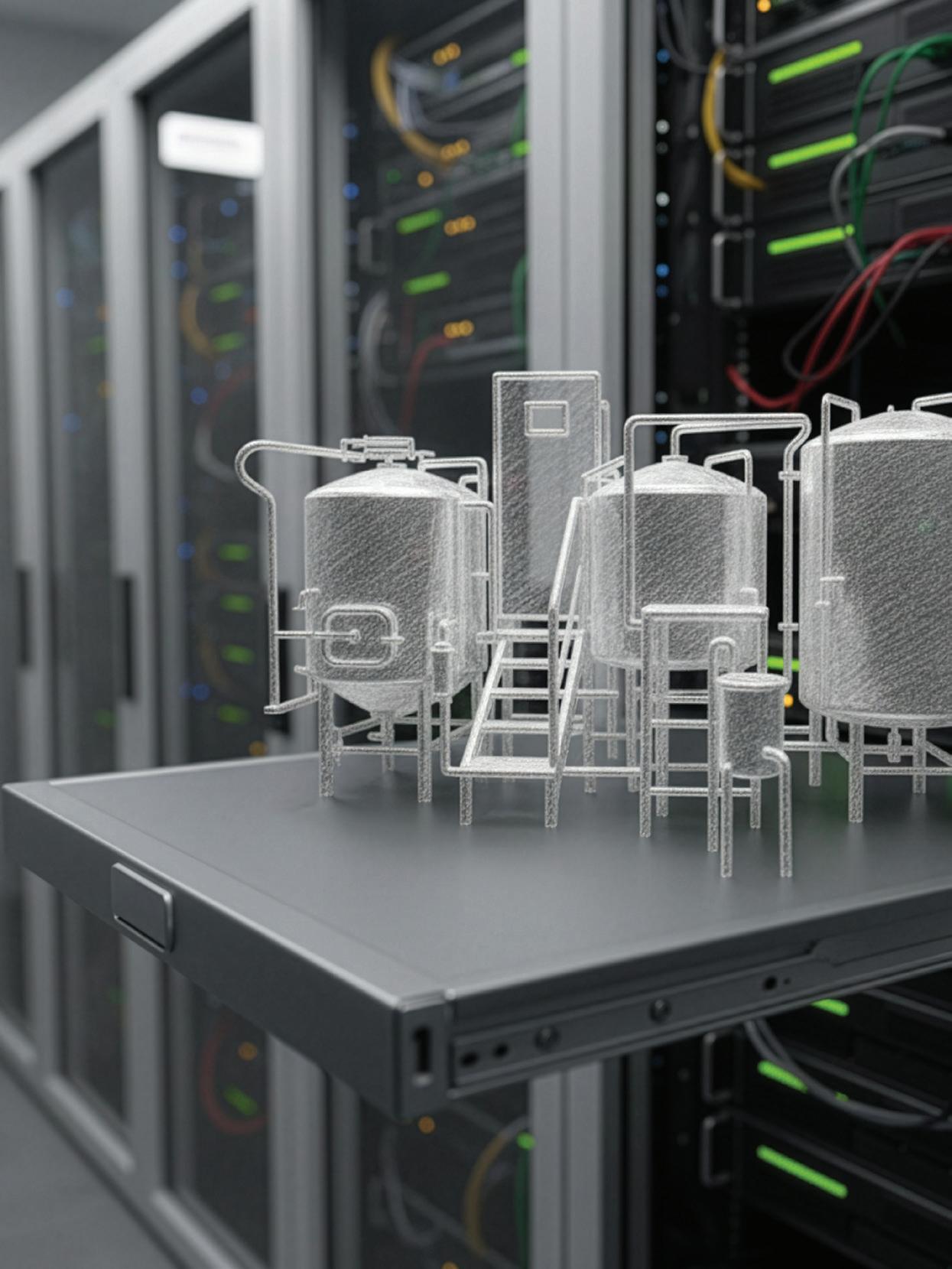

AROUND THE WORLD

A STAGE FOR SOFTWAREDEFINED AUTOMATION
Over 500 automation experts from all over the world met in Salzburg at the beginning of October for zenonIZE 25. Thanks to numerous practical examples, our customer and partner event impressively demonstrated how the vision of software-based automation is already being lived today – and what opportunities will arise in the future.
When the international zenoneer community meets in Salzburg, innovation is on the agenda. zenonIZE 25 took place in the traditional Mozarteum Foundation and was the largest COPA-DATA customer event to date, with over 500 participants. Under the inspiring motto “Composing Tomorrow: Automatize, Digitalize, zenonIZE”, customers, partners,and industry experts enjoyed two days full of inspiration, dialog,and practical insights. The main topic was software-defined automation – the fundamental change from hardware-based to flexible, software-based automation solutions.
“zenonIZE 25 featured a rich program with over 60 speakers, including representatives from ongoing customer projects, who shared their real-world experiences and success stories,” says Phillip Werr, Member of the Executive Board at COPA-DATA. The agenda included special sessions for manufacturing with a focus on life sciences, the process industry and industrial sustainability, as well as energy tracks on virtualization and interoperability. The practice-oriented engineering workshops were particularly popular, as were the partner stands, where participants were able to experience the functions of the zenon software platform up close.
FLEXIBLE INTO THE FUTURE
“For decades, the automation industry has envisioned a future where processes are no longer bound to rigid hardware but orchestrated through flexible software,”
Stefan Reuther, another Member of the Executive Board, emphasizes. “At zenonIZE 25, we showed how our customers can gain flexibility, resilience and longterm competitiveness with zenon.”
Customer presentations with ongoing or implemented projects from all over the world made the zenon impact visible and tangible. Panel discussions with industry specialists and COPA-DATA experts shed light on technological developments, ranging from HMI design and automated engineering to new business models and their impact on the lack of skilled workers.
Salzburg, Mozart’s home city and COPA-DATA’s headquarters, provided the setting for this event that merged tradition with forward-focused thinking. Rounded off with an exquisite networking dinner in the St. Peter Stiftskulinarium, the oldest restaurant in Europe, the inspiring echoes of zenonIZE 25 will hopefully stay with all participants for a long time to come.
See you in 2027!

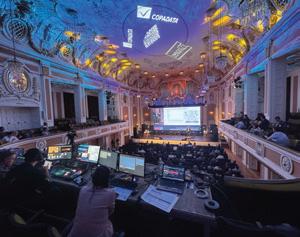
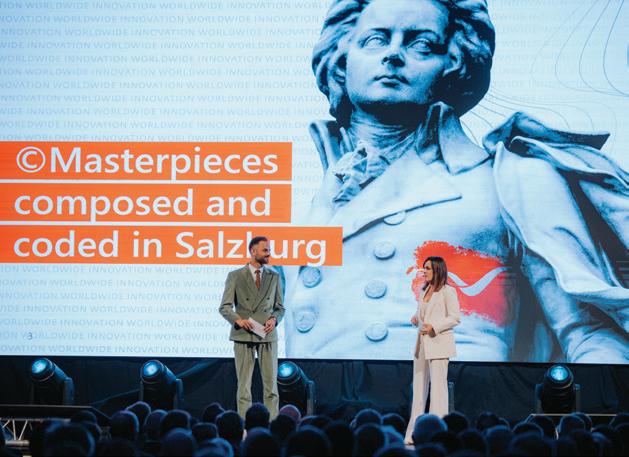
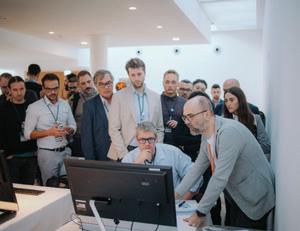

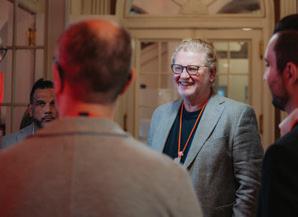
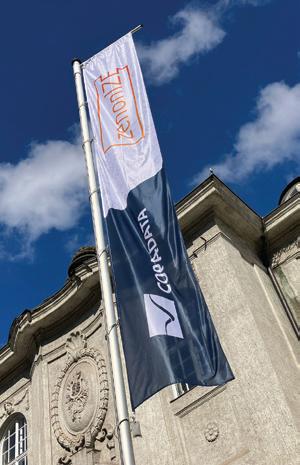

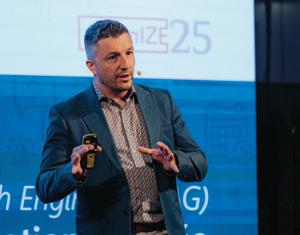

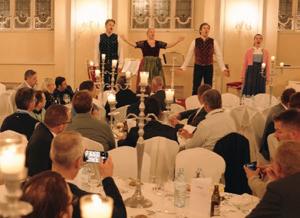

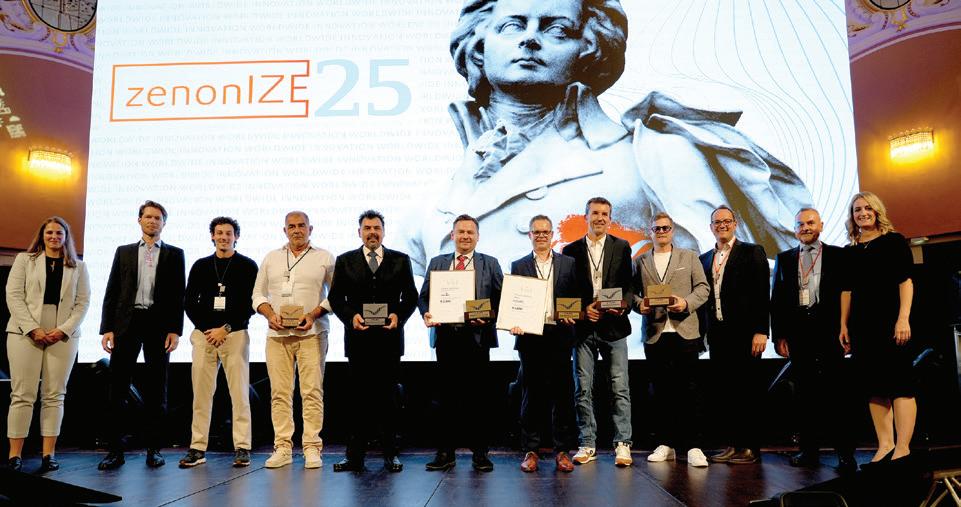

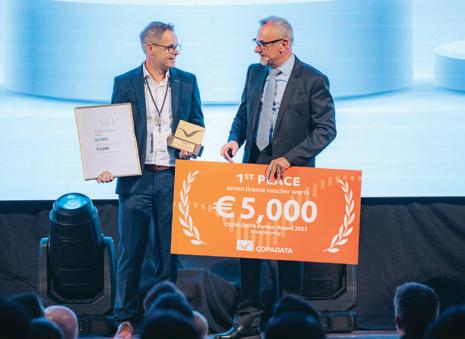
LEARNING FROM EACH OTHER AND REACHING YOUR PEAK WITH THE CDPC
Founded in 2011 and updated to meet new needs in 2024, the COPA-DATA Partner Community (CDPC) has secured its place in our company’s history as a success story. Then, as now, growing together and benefiting from mutual support remain the community’s guiding principles. To honor the successes of our partner companies and present their work to a wider audience, the COPA-DATA Partner Community Awards were presented for the first time at zenonIZE 25 in the categories of Manufacturing and Energy and Critical Infrastructure. Gold, silver, and bronze awards were presented in both categories. In the Manufacturing category, Memo3
took gold with just over a year of CDPC membership under its belt. In the Energy and Critical Infrastructure category, gold went to SPIE Energotest for a project using zenon as a scalable platform for the automation of hybrid renewable energies.
Manuela Rettenbacher and Verena Glück manage the COPA-DATA Partner Community and hosted the award ceremony. As business development managers, they are the COPA-DATA contacts for all CDPC-related matters. Further information about the award and partner projects can be found at: www.copadata.com/en/partner-community
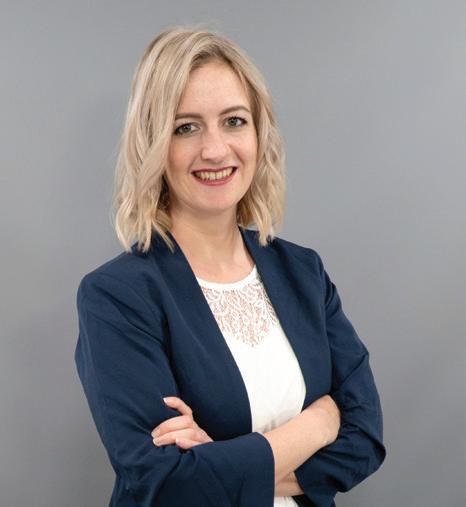
Manuela Rettenbacher has been working at COPA-DATA since 2015 and has been responsible for Global Partners & Alliances as Business Development Manager since June 2024. Previously, she worked in marketing.
manuela.rettenbacher@copadata.com

After completing her studies in Information Technology and Systems Management (ITS), Verena Glück began her career in technical support at COPA-DATA in fall of 2018. Since March 2025, she has been responsible for the Partner Community. verena.glueck@copadata.com
THE COPA-DATA PARTNER COMMUNITY
The COPA-DATA Partner Community (CDPC) is an international community with over 500 members. It drives digital transformation and supports companies in integrating the zenon software platform. Partners are mainly system integrators but also include machine manufacturers, original equipment manufacturers (OEMs), and research or educational institutions.
CDPC on Youtube
THE PARTNER LEVELS –ALL ABOUT ZENON
do not need any certification to join.
have basic knowledge and initial experience with projects.
possess in-depth practical and theoretical knowledge.
have implemented major projects already.
Would you like to join the COPA-DATA Partner Community? Any questions?
Write us at partner@copadata.com
For more information, visit www.copadata.com/partner
ABOUT ZENONEERS
Who are the people who implement challenging projects with zenon in a wide range of industries?
COPA-DATA introduces them.

ZENONEER IN SOLUTIONS DEVELOPMENT
Dennis Jährlich
Implementing complex projects using the zenon software platform is Dennis‘s daily business. As Deputy Head of IT at KROPF Solutions, he is constantly faced with challenges. In his more than 20 years with the company, Dennis has gained experience in a wide variety of areas and applications with zenon. Let’s have him tell you more about himself.
ABOUT DENNIS
How would you describe yourself?
I’m basically a positive person and very open to new things. When it comes to approaching challenges, I would describe myself as objective and technically solution-oriented.
How has your career path developed?
After completing my training as an IT specialist for system integration at KROPF Solutions, I was involved in the implementation and commissioning of numerous zenon projects. I then completed further training to become an IT project manager. I am currently the deputy department head and coordinate several teams as a project manager.
COMPANY
In which industries does KROPF Solutions operate?
With 30 years of experience in delivering automation solutions, KROPF Solutions has four locations in Europe and its customers include companies in the plant and mechanical engineering, automotive, energy, and food and beverage industries.
PERSONAL
How do you spend your free time?
I enjoy being active: running, swimming, cycling, and even triathlon are among my hobbies. When I have some time left over from western riding, I like to travel.
ZENON
What has been your biggest challenge so far in implementing solutions with zenon?
Implementing various zenon projects at multiple VW plants. This included the increased use of zenon Logic, Smart Objects, and Add-In Interface, as well as managing the zenon 3rd level support for VW.
What has been your most exciting project so far?
The first implementation of the SAP interface at AUDI Győr, together with another software developer from Salzburg.
How does zenon make your everyday work easier?
The software platform can be compared to a large construction kit with numerous preconfigured templates for all of our customers’ requirements. This greatly simplifies configuration.
A LOOK INTO THE FUTURE
What ideas would you like to see implemented in the future?
I would like to further optimize the processes in our projects by using zenon Wizards and Add-Ins to save time during zenon configuration.

ZENONEER IN THE PHARMACEUTICAL INDUSTRY
Marlene Robles
As a project engineer in the pharmaceutical industry, Marlene is involved in planning, implementing, and commissioning automation projects for production facilities. Let’s hear from her directly how zenon helps her accomplish these tasks.
ABOUT MARLENE
How would you briefly describe yourself in a few words?
I would describe myself as flexible, proactive, and open to new things.
How did you get into this field?
In addition to my engineering studies in Venezuela, I completed an apprenticeship as an electronics technician in Germany. After graduating, I applied for interesting job opportunities and landed at Actemium, which was lucky for me because I get to work on exciting projects with state-of-the-art technologies and am surrounded by a reliable and friendly team.
COMPANY
In which field does Actemium operate?
Actemium supports industrial customers worldwide with sustainable solutions for the planning and implementation of industrial facilities and processes. With offices in 40 countries and around 100 locations in Germany, Actemium always has a contact person nearby.
PERSONAL
What do you like to do in your free time?
I like to ride motorcycles for the adrenaline rush, do sports for balance, travel to experience new perspectives, and learn new languages to broaden my mind.
ZENON
What challenges were you able to solve with zenon?
One case that immediately comes to mind involved implementing a zenon project on a pharmaceutical customer’s extrusion line under strict validation conditions. Documentation, traceability of changes, and testing according to GAMP5 guidelines required significantly more work than in conventional industrial projects.
What has been your personal highlight while working with zenon?
Working with an international client, I learned how important clear communication and flexibility are in order to be able to respond quickly to different requirements.
How do you use zenon in your everyday work?
I primarily use zenon to visualize process equipment, manage recipes, handle alarms, and administer users. I also use zenon to create reports, connect to PLC systems, and implement GMP-compliant HMI solutions.
A LOOK INTO THE FUTURE
Professionally, I’d like to help design projects that deliver real added value: both technically and socially. Personally, I hope to continue to progress, learn new things, and perhaps one day to set up something of my own.
ABOUT US
In every issue, Information Unlimited places the spotlight on selected employees to help our readers get to know our company better. Our employees featured here talk about their professional workday and personal interests.
FRANZISKA HALBRAINER
Expert Software Developer,
COPA-DATA Headquarters
At COPA-DATA since: 2012
During my career as a developer, I’ve worked in many areas. Colleages will mention my name when discussing topics such as energy, Process Recorder, and smart objects. My team is currently working on the Linux Service Engine. It’s important to me that we, as a team, move in the same direction. When we encounter multiple paths to the same goal, we weigh the options and decide together how best to get there. What I like about my job is the excitement of being confronted with a problem, sketching out the solution, and then the delight of solving the problem. I feel the same joy if this happens for my colleagues.
My workstation is set up to be functional, with two monitors, a keyboard, a mouse, a glass of water, and a cup of black tea. I find inspiration on my photo-filled pinboard and from my family.


COPA-DATA Headquarters
At COPA-DATA since: 2015
My specialty is energy connectivity, with a focus on drivers and process gateways, as well as protocols such as IEC 61850, IEC 60870, DNP3, and OPC UA. With my extensive general knowledge of zenon, I advise customers and colleagues on implementing practical solutions, analyzing communication problems, and supporting the process of defining product enhancements in this area.
In the Technology Excellence Team (TET), we place great emphasis on sustainable and scalable knowledge generation and distribution around zenon technology. As a team, we support each other in often challenging tasks. Our focus areas are divided, which allows us to cover virtually all of the areas.
I especially like that my job gives me the freedom to dive more deeply into complex topics and help others to accomplish their tasks successfully.
leo.steinlechner@copad ata.com
SUSANNA JANKOVIĆ
Head of International Marketing, COPA-DATA CEE/ME
At COPA-DATA since: 2021
I’m responsible for all marketing activities in Central and Eastern Europe and the Middle East. Colleagues and clients can always reach out to me with questions on strategic or operational marketing – and when it’s not about work, I enjoy open exchanges and good conversations.
When working together, respectful and friendly interaction is very important to me – many of my teammates have become more than just colleagues over the years.
For me, it’s all about the mix: a variety of tasks within a passionate team that supports one another. That combination is what drives and motivates me every day.
susanna.jankovic@copadata.com


HELMUT WEBER
Software Architect for Connectivity, COPA-DATA Headquarters
At COPA-DATA since: 2004
My specialty includes zenon drivers, process gateways, and zenon Logic Service. Colleagues come to me for advice on communication protocols in industrial and energy sectors, software architecture, development guidelines, and constraints. I also help with troubleshooting or when developers get stuck. My programming skills primarily include C++.
Working proactively and communicating directly with colleagues are very important to me. Good communication within the team and personal responsibility are, in my opinion, cornerstones of successful teamwork. What I particularly like about my job is error analysis, solving complex problems, and supporting my colleagues in software development.
helmut.weber@copadata.com
Setting actions in the factory
Testing the action in the model
Control algorithm (agent)
Adaptation
Factory model
Status and
ADAPTIVE LEARNING ALGORITHMS IN CONTROL SYSTEMS
Industrial companies often pay for large volumes of energy to be provided. Yet, because of the way energy is priced, they do not always use the amount for which they have been billed. To align energy costs more closely with actual consumption, a self-learning, AI-powered control system can help to optimize energy consumption. This can make energy consumption more sustainable and reduce costs. The Intelligent Data Analytics (IDA) Lab Salzburg is researching this topic in collaboration with COPA-DATA.
CALCULATING THE ENERGY PRICE
In the industrial sector, manufacturing goods and building maintenance require a lot of energy. The associated costs can be very high. They are typically made up of three parts. This includes the fixed costs for the infrastructure provided by the energy provider and the unit price for the amount of energy consumed. The third part is the supply price, which is used to pay for the ongoing provision of energy and is tailored to the company’s needs. This third part of the price is determined from the most recent billing period; per month, quarter, or year. During a billing period, the average values of each 15-minute period are recorded. The highest of these recorded averages is selected as the guideline for the subsequent billing period.
POTENTIAL FOR OPTIMIZATION
Energy consumption for most businesses fluctuates to some degree and, from time to time, peak loads occur. Peak loads are sudden, sharp increases in energy consumption that result in an excessively high average value for the 15-minute period in which they occurred. As a result, at the end of the billing period, although there may be many average values corresponding to the business’s usual energy consumption, there will likely be a few very high average values which represent the periods containing peak load. Because the highest of these averages is used as the reference price for the following billing period, the bill for supply in the subsequent period will be far higher than the business’s normal consumption. Therefore, a large portion of the billedfor energy may not be used, even though the energy supplier will still bill the supply costs.
Given this, the right form of peak load optimization can generate substantial savings, especially in the area of cost attribution. To prevent unsustainable costs users need to be able to adjust averages and smooth out peak loads accordingly.
METHODS FOR PEAK LOAD SMOOTHING
There are two methods used to smooth peak load. The first is to temporarily shut down or reduce loads. The second is achieved by connecting generators. Both reduce overall energy consumption. These strategies can also be used in combination.
In order to start the process of peak load smoothing with enough lead time, you must know in advance when a peak load will occur. This is the job of the base load forecast. The total energy consumption is made up of the base load, the fixed part of energy consumption, and the variable load, the additional generators and switchable loads. If a very high base load is forecast, the approved loads can be switched off, and the generators switched on. The decision to do so is made by the system’s “agent” (control algorithm). This algorithm typically uses information about the preferred sequence for switching on and off and specific data on the availability of certain system components at the moment when the decision is made to switch on or off. Based on this information, the agent calculates the optimal switching strategy.
A CYCLE OF PREDICTION, SETTING ACTIONS, FEEDBACK, AND ADAPTATION
The infographic illustrates the entire control loop for a peak load smoothing process using zenon. First, a model forecasts the facility’s base load and energy consumption. The control algorithm, which is directly connected to zenon, then simulates various switching sequences of consumers and producers. It then evaluates each alternative. The variant with the best rating is implemented in the system. The control algorithm transmits the variant as a suggestion to zenon, which then initiates the implementation. The system then returns the updated device status and a real-world rating to zenon. The agent, after passing on the data from zenon, compares this with the simulated rating to check the model’s accuracy. Finally, it updates the forecast model with the latest operating data. This ensures that the model remains reliable, continuously adapts to new situations, and improves through continuous learning.
The forecast always refers to the current billing period. This allows the algorithm to plan not only the next switching action but also an entire sequence of steps, optimizing various action chains. It thus achieves the highest possible energy consumption without exceeding the permissible peak load.
The agent will be further developed over the next few years, relying on AI techniques such as deep reinforcement learning combined with robust statistical methods. This will enable it to respond flexibly and reliably to individual customer requirements while ensuring the desired functionality of its algorithms at all times.
MODEL BUILDING
Modeling the system consists of two parts. First, specification of the model. Second, adaptation of the model to the available data. In the first step, you determine the form of the desired model. In simple cases, this can be a smooth linear increase or, in more complex cases, a targeted combination of linear and seasonal components. The parameters (strength of increases and characteristics of seasonal components) are not yet fixed.
These parameters are determined when adapting to the available data. In the process, parameters are determined that are most likely to lead the model to predict the data, resulting in a predefined complex model that best describes the data.

SARAH TRAUSNER

SIMON HIRLÄNDER
As part of IDA Lab Salzburg and commissioned by COPA-DATA, Simon Hirländer developed the first version of the agent, which was subsequently further developed by Sarah Trausner. Supervised by Simon Hirländer, Sarah Trausner is working on expanding the system as part of her doctorate degree.
https://idalab.at/
MEDIA OWNER, EDITOR AND PUBLISHER Thomas Punzenberger Ing. Punzenberger COPA-DATA GmbH Karolingerstrasse 7b 5020 Salzburg, Austria Company registration number: FN56922i T: +43 662 431002-0 office@copadata.com www.copadata.com
EDITORIAL TEAM Sebastian Bäsken, Michaela Hasslacher, Samuel Inwinkl, Andrea Mitterer, Phillip Werr
COPYEDITING Eva-Maria Oberauer-Dum, Esther Rutter (both external)
PROOFREADING Supertext Deutschland GmbH
ART DIRECTION Kathrin Machmer
AUTHORS Emilian Axinia, Mark Clemens, Constantin Collini, Stefan Eder, Alessandro Gnutti, Simon Hirländer (guest author), Stefan Hufnagl, Peter Kemptner (guest author), Bernhard Korten, Michael Legat, Lukas Punzenberger, Josef Ries, Matthias Schnöll, Sarah Trausner (guest author), Dominic Voithofer
PRINTING COMPANY Offset 5020 Druckerei & Verlag GesmbH, Bayernstrasse 27, 5072 Wals-Siezenheim, Austria
MAILING HOUSE Pro mente Salzburg – Job Training Center Siezenheim, Angerstrasse 10, 5071 Wals-Siezenheim, Austria
PRINT RUN 2,400 copies
COPYRIGHT © Ing. Punzenberger COPA-DATA GmbH. All rights reserved. The magazine and all the articles and images it contains are protected by copyright. Any use or duplication is not permitted without prior permission from the editorial team.
The technical data contained herein has been provided solely for informational purposes and is not legally binding.
zenon®, zenon Analyzer®, zenon Supervisor®, zenon Operator®, zenon Logic® and straton® are trademarks registered by Ing. Punzenberger COPA-DATA GmbH. All other brands or product names may be the trademarks of their representative owners and have not been specifically earmarked.
We thank all contributors for their friendly support and the pictures they provided. Subject to change – technical, print, or otherwise.
CONTACT/ FREE SUBSCRIPTION IU@copadata.com www.copadata.com/IU
linkedin.com/company/copa-data-headquarters facebook.com/COPADATAHeadquarters youtube.com/copadatavideos instagram: @copadata_insights
SIMATIC* TIA LIBRARY
Read more about the benefits of the new Process Library on page 47.
DEMO PROJECTS
Hack the development with pre-configured solutions.
SMART OBJECT TEMPLATES (SOTS)
Cut engineering time by 50% with plug-and-play logic.
UI COMPONENTS
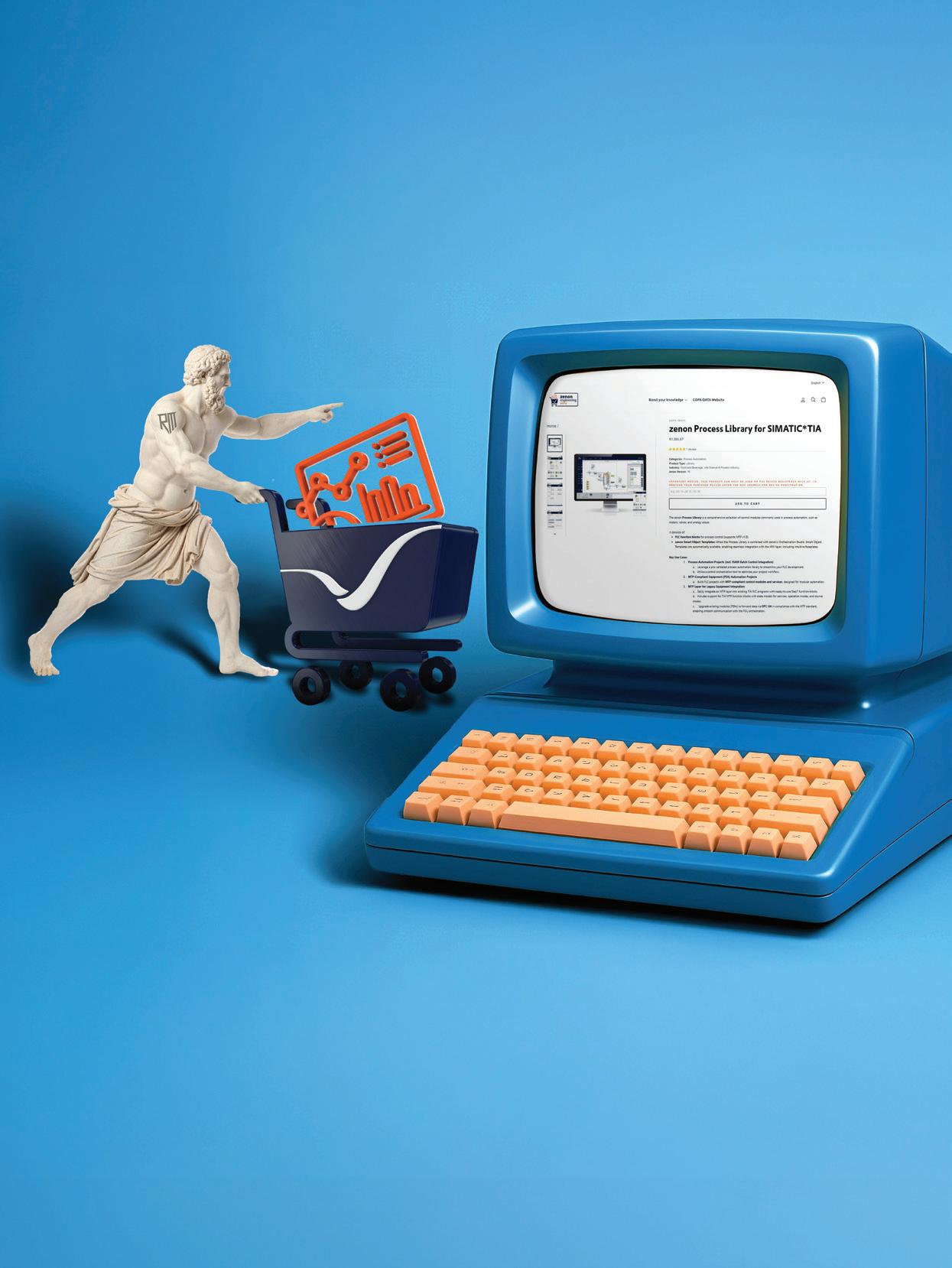
NEW: SIMATIC* TIA Library is here
